100 Common Sales Terms Explained
Casey O'Connor
The sales field is notorious for its many acronyms and buzzwords.
Many of the most common sales terms are mistakenly used interchangeably because of how similar they sound, but each sales term has nuance.
Defining sales terms can help align sales and marketing teams to optimize the sales process and generate maximum revenue.
Below, we compiled a glossary of 100 of the most common sales terms, sorted alphabetically.
For easy navigation:
Sales Terms A-F
1. ABC
The age-old “ABC” sales acronym stands for “Always Be Closing.” The mantra is meant to remind salespeople that every decision they make throughout the sales process should be with the goal of closing the deal.
The phrase, though well-intentioned, is considered somewhat outdated by many salespeople today. Some prefer the more updated “Always Be Connecting,” which deprioritizes the close and instead gives value to the rapport and trust-building that great salespeople generate throughout the sales funnel, even if they don’t ultimately close the deal.
2. A/B Testing
A/B testing is an experimental method that salespeople use to determine market response to different sales strategies. 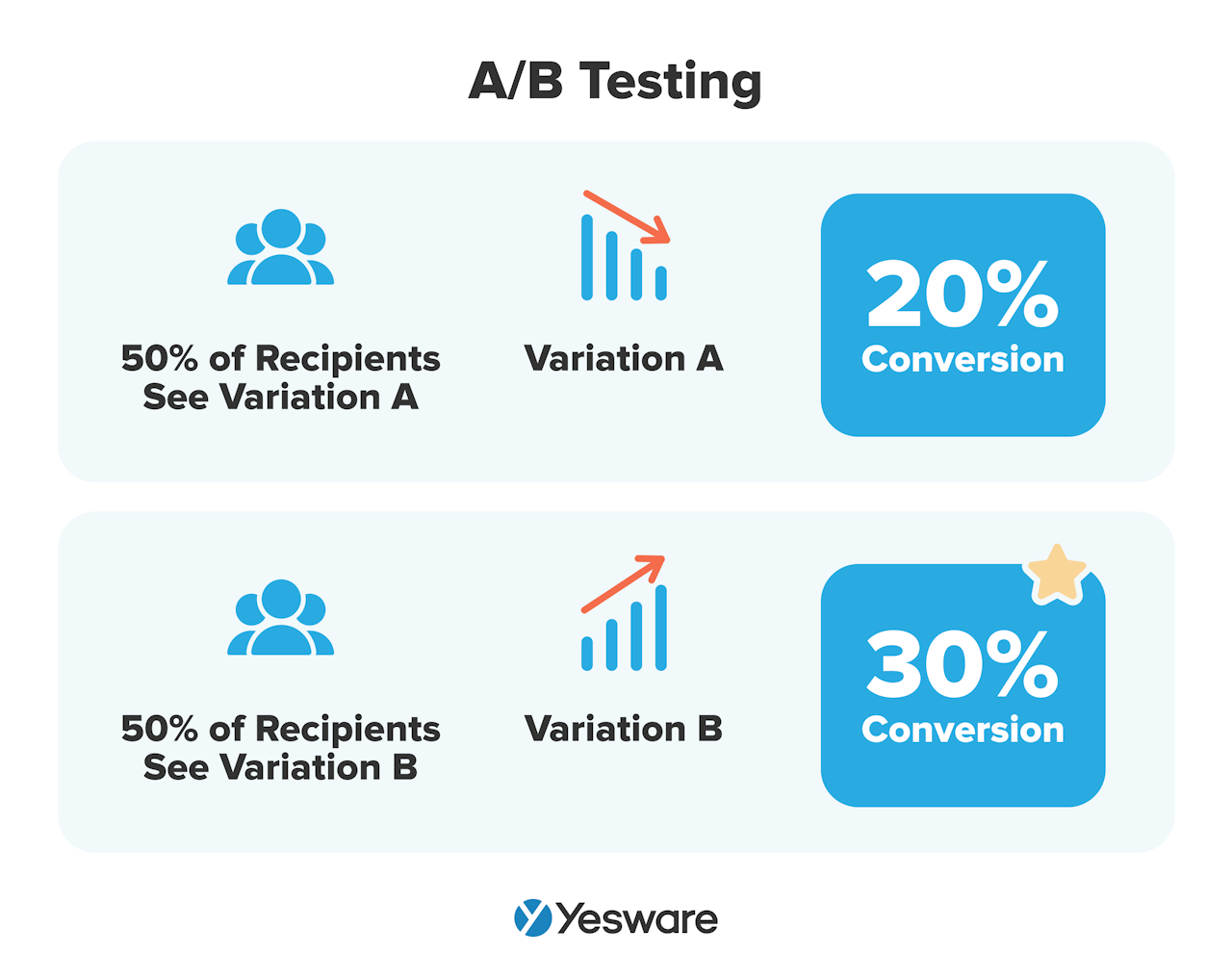 A/B testing is, simply, split testing. Sales reps test and collect data on two or more variables to measure which is most effective with the target customer.
A/B testing is, simply, split testing. Sales reps test and collect data on two or more variables to measure which is most effective with the target customer.
3. Account
A customer account contains careful records of a prospect’s or customer’s demographic information, as well as logs of every interaction and transaction they’ve had with your company. An account is created after a customer’s initial purchase from your business.
4. Account-Based Selling
Account-based selling is a B2B sales strategy in which sales and marketing teams identify, target, and nurture specific highly-qualified and potentially highly lucrative prospects.
Account-based selling is highly personalized and requires that sales reps dedicate all of their time and resources to just a few high-stakes accounts. It’s not the right fit for every sales team or organization, but it can be very lucrative in the right market.
5. Account Executive (AE)
The account executive is the person responsible for managing a customer’s and/or prospective customer’s account. This is a slightly more senior/specialized role than a standard sales rep.
The account executive’s job is to work with both successful customers and prospective buyers. Current customers help account executives know how well the product meets the needs of the market, and AEs use that feedback to help them shape and personalize their messaging to high-value prospects.
6. Account Development Representative
An account development representative works primarily with the front end of the sales pipeline. Sales reps in this role are responsible for attracting and nurturing new leads to prepare for deeper engagement with AEs. They strategize and consult with sales managers about the best ways to meet the needs of the market in order to reach sales goals.
7. Ad Hoc Reporting
Ad hoc reporting refers to the practice of synthesizing and drawing insights from data in real time, and often in response to a specific, time-sensitive question or problem.
Ad hoc reporting is different from scheduled data reports that most sales teams analyze on a monthly or quarterly basis. Ad hoc reporting gives sales reps the insight and ability to adjust their strategies and tactics as needed in order to reach sales goals.
8. AIDA
The sales term AIDA stands for:
- Attention/awareness
- Interest
- Desire
- Action
The acronym is most often used in the depiction of the traditional sales funnel. 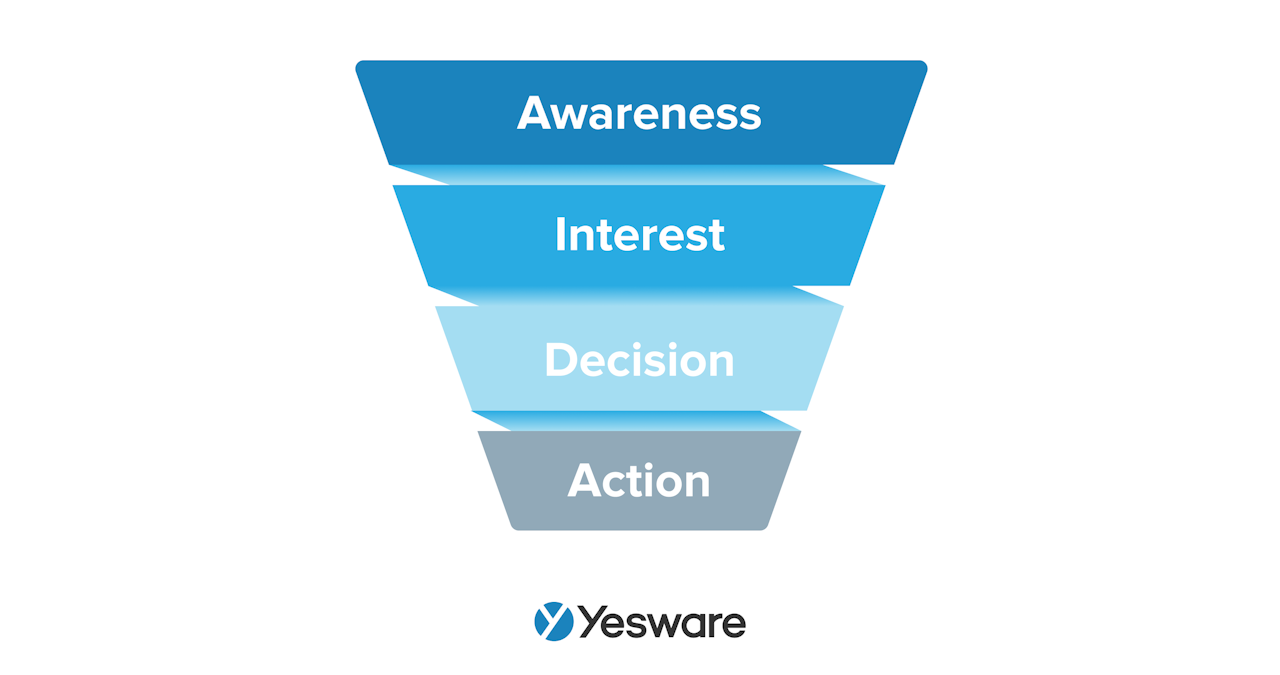
9. Annual Contract Value (ACV)
The annual contract value (ACV) is the average revenue generated per customer per year. This is an important metric for B2B companies and is usually compared to customer lifetime value (LTV) to determine how long it takes to pay back the cost of acquiring the customer in the first place.
To calculate ACV, divide the total contract value in a time period by the total number of years in that time period.
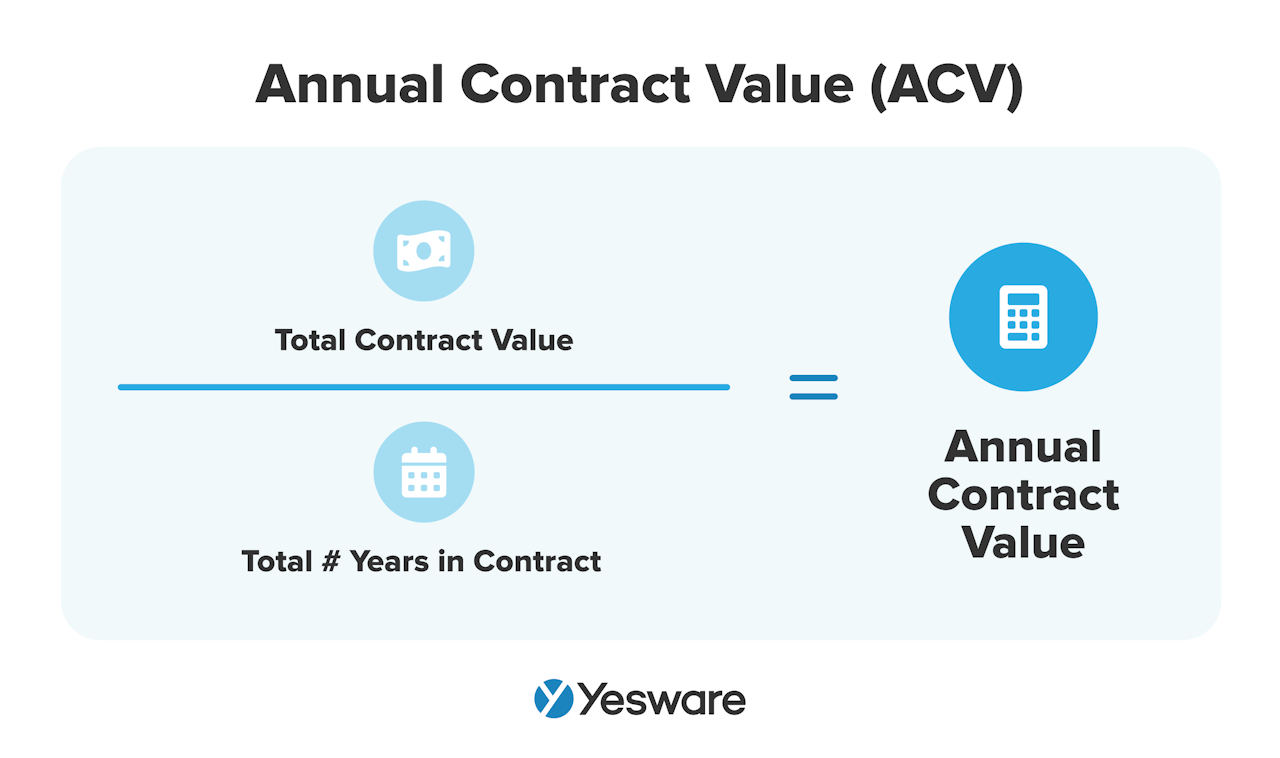
10. Annual Recurring Revenue (ARR)
Annual recurring revenue (ARR) is a metric that shows much revenue a business earns from all its customers over one year.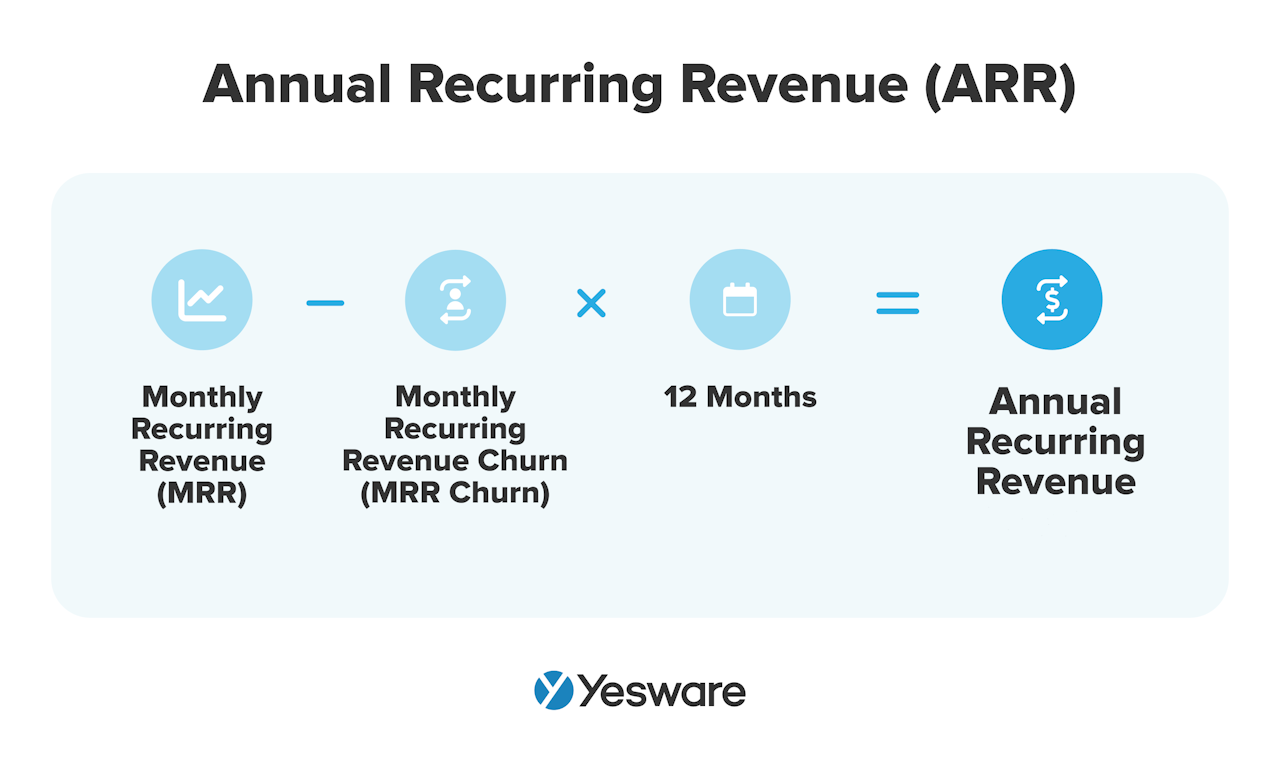 It’s most useful for businesses with longer subscription periods, and is often used to make long-term plans and price considerations.
It’s most useful for businesses with longer subscription periods, and is often used to make long-term plans and price considerations.
11. Business Development Rep (BDR)
A business development rep (BDR) is a sales rep who is responsible for outbound lead generation. BDRs initiate contact with leads to open a sales relationship and set up meetings with sales development reps (SDRs).
12. Business-To-Business (B2B)
A business-to-business (B2B) organization is one that sells products or services to other businesses. B2B companies usually have longer and more complex sales processes.
13. Business-To-Consumer (B2C)
A business-to-consumer (B2C) organization is one that sells products or services to individual buyers. B2C companies usually have shorter sales cycles and lower margins.
14. Bad Lead
A bad lead is one that is unlikely to become a customer. Sales reps should cut ties with bad leads as early in the sales process as possible; they are a waste of time and resources.
Take care, though, to note the distinction between a bad, poor-fit lead, and one who just needs a little bit more time and nurturing.
15. BANT Framework
The BANT framework is one way that sales reps can qualify leads. The acronym stands for:
- Budget
- Authority
- Need
- Timeline
Sales reps ask questions about those domains to determine how a particular lead should be prioritized. 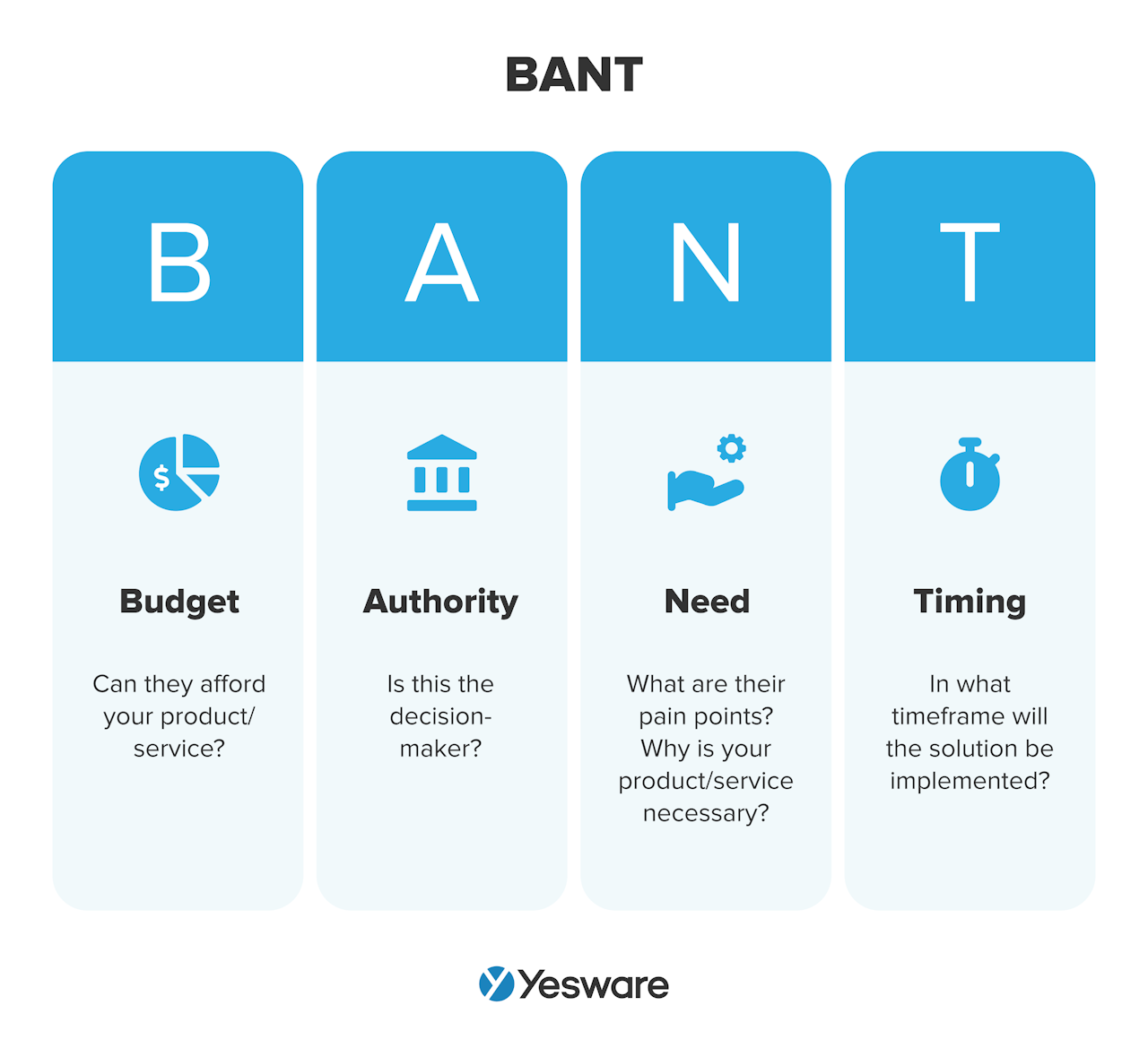 The BANT framework was developed at IBM and was one of the most widely-used qualification methods for many years, but in recent years has seen other frameworks compete in popularity.
The BANT framework was developed at IBM and was one of the most widely-used qualification methods for many years, but in recent years has seen other frameworks compete in popularity.
16. Benefit
A benefit is the value that a customer gets from using your product or service.
Benefits are distinctly different from features, though the two often go hand-in-hand during the sales process. Benefits are the ways in which products solve a customer’s problem; features are the means by which those problems get solved.
Though a product’s features are important, skilled sales reps know that benefits are what persuade the buyer.
Here’s a good example: a CRM’s powerful automation {!feature} saves sales reps time {!benefit}.
17. Bottom of the Funnel (BOFU)
The bottom of the funnel (BOFU) is the point in the buying process during which the buyer makes their decision.
Up until this point in the sales funnel, the buyer has identified their problem, compared solutions, and are ready to close the deal. This is the narrowest part of the sales funnel.
18. Buyer Behavior
Buyer behavior refers to the actions and choices a prospect makes as they work their way through the sales funnel.
Buyer behavior can be impacted by wants, needs, goals, roles, responsibilities, stressors, challenges, and many other environmental influences. It’s a broad term that encompasses a variety of behaviors.
19. Buyer Persona
A buyer persona is a fictional or semi-fictional representation of the type of person that buys your product. This profile consists of demographic information, psychological insights, and buyer behavior data that helps marketers and sales reps sell effectively to the target audience.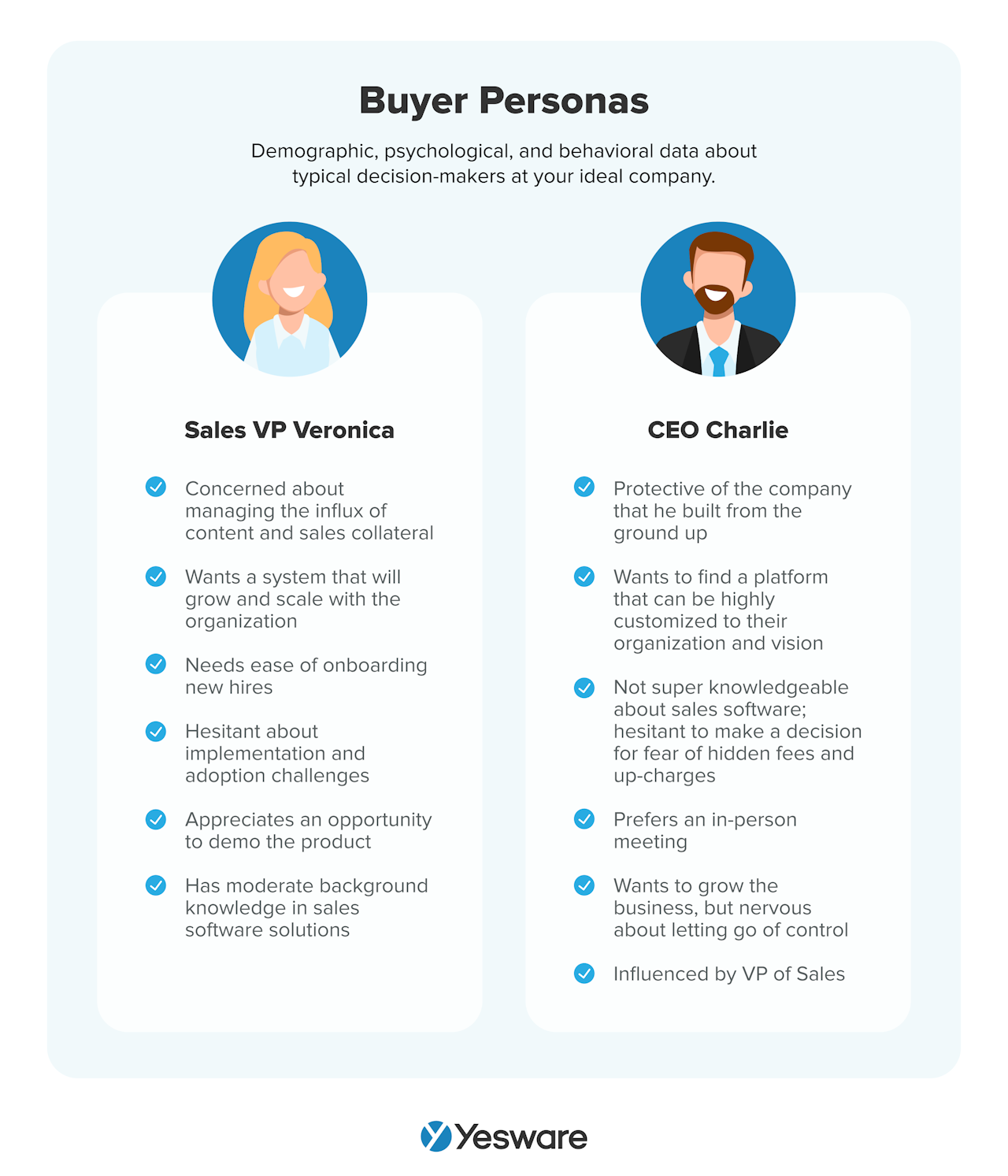 Most companies develop more than one buyer persona, given the fact that most B2B sales decisions require 6 – 10 decision-makers.
Most companies develop more than one buyer persona, given the fact that most B2B sales decisions require 6 – 10 decision-makers.
20. Buying Criteria
Buying criteria refers to any of the information a customer needs or considers when they make their purchasing decision. This information might be requested by the prospect, or they may find it through their own research. It can also be written/directly shared, or implied/inferred, and includes both factual and persuasive information.
21. Buying Process/Buyer’s Journey
The buying process — also known as the buyer’s journey — refers to the stages and decision points a buyer goes through as they identify and research solutions to their problems. 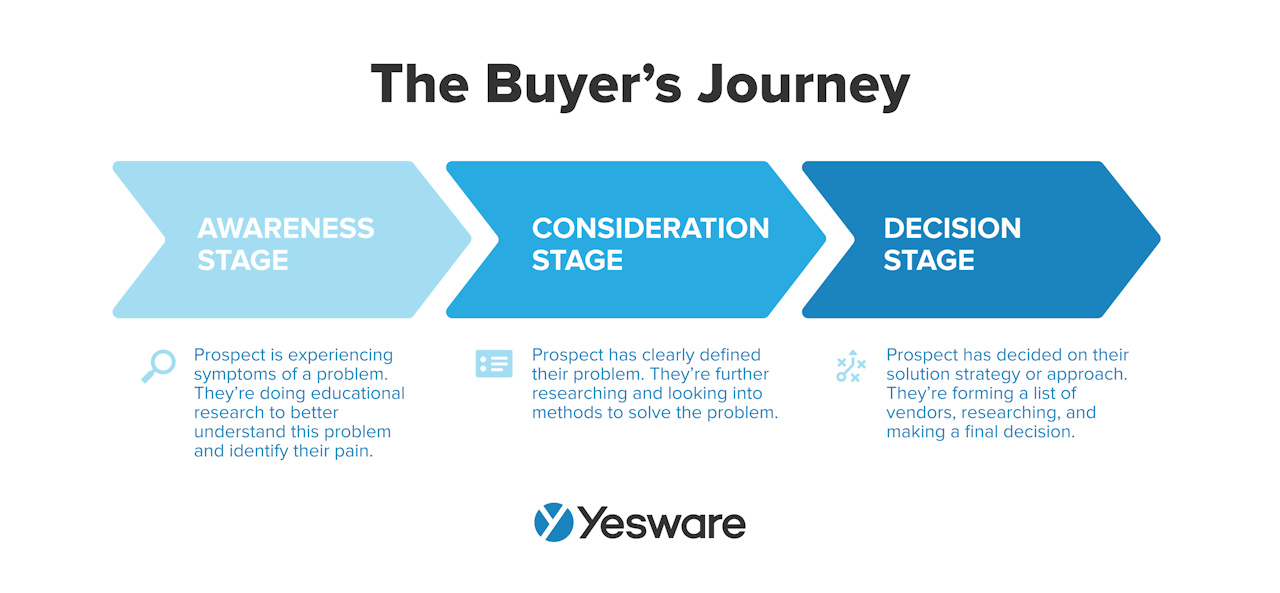 Most buying processes are divided into three stages: Awareness, Consideration/Evaluation, and Decision.
Most buying processes are divided into three stages: Awareness, Consideration/Evaluation, and Decision.
In the Awareness stage, the customer becomes aware of and identifies their problem.
During the Consideration/Evaluation stage, the customer does research to learn more about their problem, and becomes more clear about their specific pain points. They look for potential ways to solve their problem and consider their various options.
In the Decision stage, the buyer chooses the solution that best meets their needs.
22. Buying Signal
A buying signal is a cue given knowingly or unknowingly by a prospect that indicates their readiness to purchase.
Buying signals help sales reps better understand how and when to offer input in the buying process. Buying signals include signing up for a free trial, asking for a quote, or talking about contract specifics.
23. Buying Intent
Buying intent refers to the chances of a prospect making a purchase. Sales reps can determine buying intent by monitoring the buyer’s journey as much as possible.
Certain sales software can help sales teams determine buying intent by tracking and targeting leads who visit their website or otherwise interact with their brand.
24. Churn Rate
Churn rate is the percentage of customers that a business loses over a given period of time.
Churn rate can be calculated by dividing the number of customers lost by the number of customers you started with, in a given period. Do not include any new sales during that period.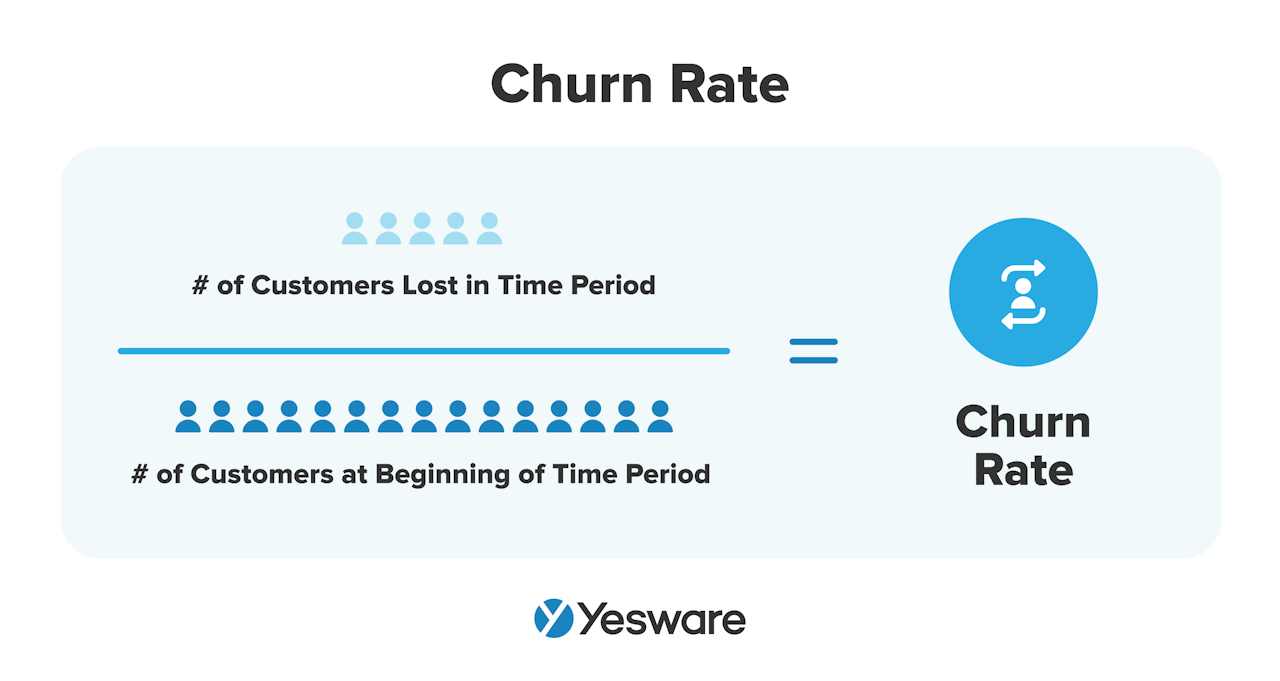 Churn rate is especially important for companies that rely on recurring revenue. It measures how effectively you retain customers.
Churn rate is especially important for companies that rely on recurring revenue. It measures how effectively you retain customers.
25. Closed Opportunities
The sales term “closed opportunities” refers to both closed-won and closed-lost opportunities. Some organizations incorrectly use this term to refer to only opportunities that are closed-won, but the term, in fact, covers both closed-won and closed-lost deals.
26. Closed-Won
A closed-won deal refers to a deal in which the customer agrees to make a purchase.
27. Closed-Lost
A closed-lost opportunity does not end with a sale. There is no purchase.
28. Closing Ratio
The closing ratio represents the number of closed-won deals compared to the number of prospects. It’s usually expressed as a percentage. Closing ratio is a useful metric for evaluating short-term performance of individual sales reps, as well as assessing profitability and long-term forecasts.
29. Cold Calling
Cold calling refers to the practice of making unsolicited calls to leads in order to initiate the sales process. Cold emailing is the digital counterpart to cold calling, though it’s considered somewhat less intrusive than cold calling.
Although today’s digital sales landscape has made cold calling somewhat antiquated, some sales reps still find it to be a personal and effective way to connect with many leads in a short period of time.
Tip: If you’re cold calling, grab our interactive worksheet below to ensure you’re hitting your number.
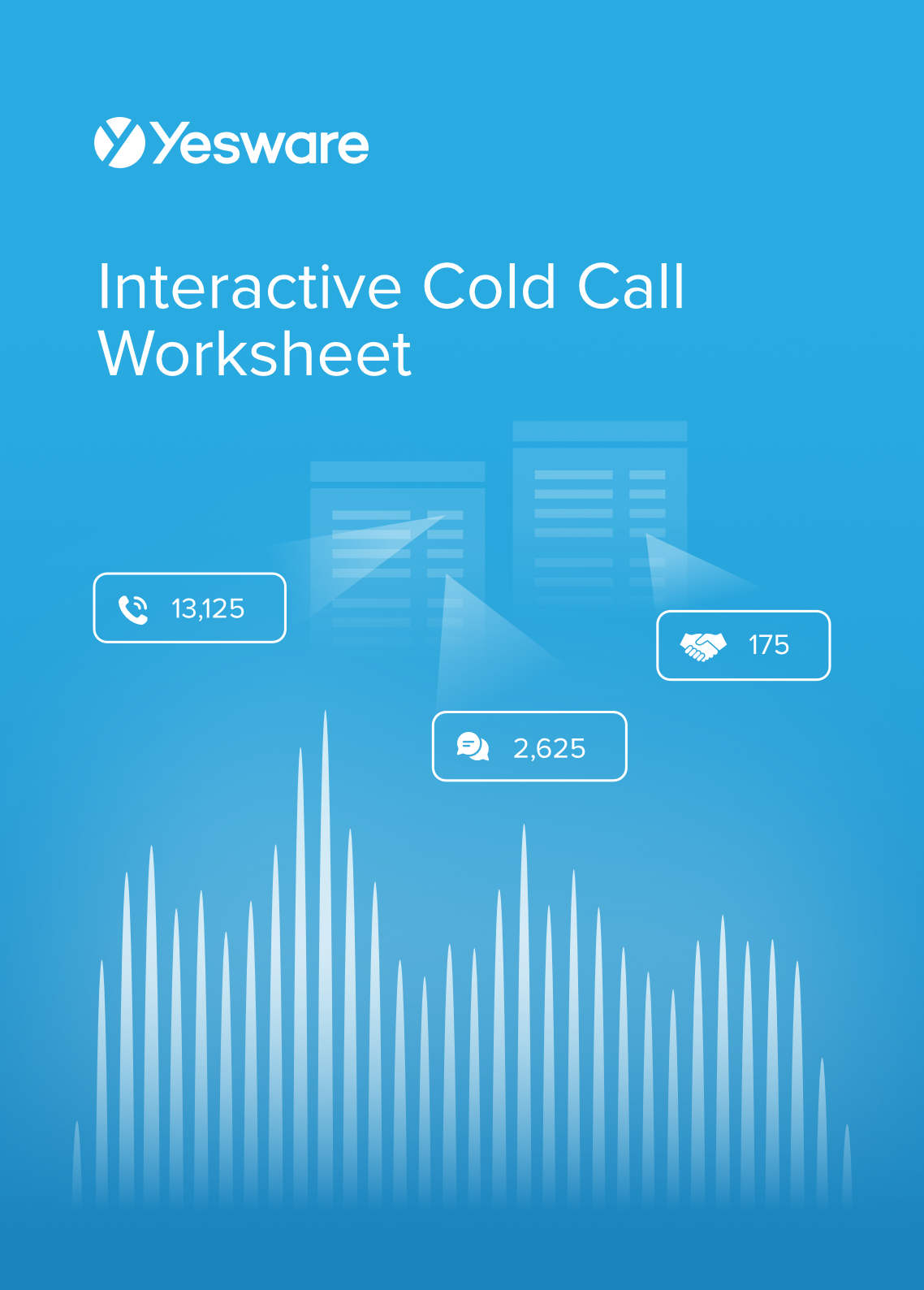 Interactive Cold Call WorksheetFully customizable worksheet that pinpoints roughly how many cold calls you need to make each day and in total for the month in order to hit your quota.
Interactive Cold Call WorksheetFully customizable worksheet that pinpoints roughly how many cold calls you need to make each day and in total for the month in order to hit your quota.
30. Commission
Commission is performance-based compensation that a sales rep earns in addition to their base salary. Commission payments usually come directly from sales revenue. Commission rates vary from company to company.
31. Conversion
A conversion occurs when a person completes a desired action in the sales funnel (e.g., subscribing to a blog or downloading a whitepaper).
A conversion might refer to the moment when a prospect signs the contract, or it could refer to the point at which a prospect transitions from one stage of the sales pipeline to the next.
32. Consumer
A consumer is someone that uses a product or service.
Note that the consumer may be a different person than the buyer. In some companies, the CFO or CEO make buying decisions, but don’t go on to use the product. In this case, they aren’t the consumer — the end user is.
A seller needs to appeal as much to the consumer as they do to the buyer.
33. Conversion Path
The sales term “conversion path” refers to the steps a lead takes to become a prospect. These stages usually include opt-in by the lead, like engaging with calls-to-action, downloading content in exchange for contact information, or interacting with landing page content.
34. Conversion Rate
The conversion rate is the number of people who completed a desired action, divided by the total number of opportunities for that action.
Let’s imagine, for example, that you have an lead magnet opt-in page that attracts 100 visitors in a day. The desired action is for the lead to input their email address in exchange for downloading the material. If 35 leads input their email addresses, the conversion rate is 35%.
35. Cross-Selling
Cross-selling refers to a sales scenario in which a sales rep sells more than one solution to a customer.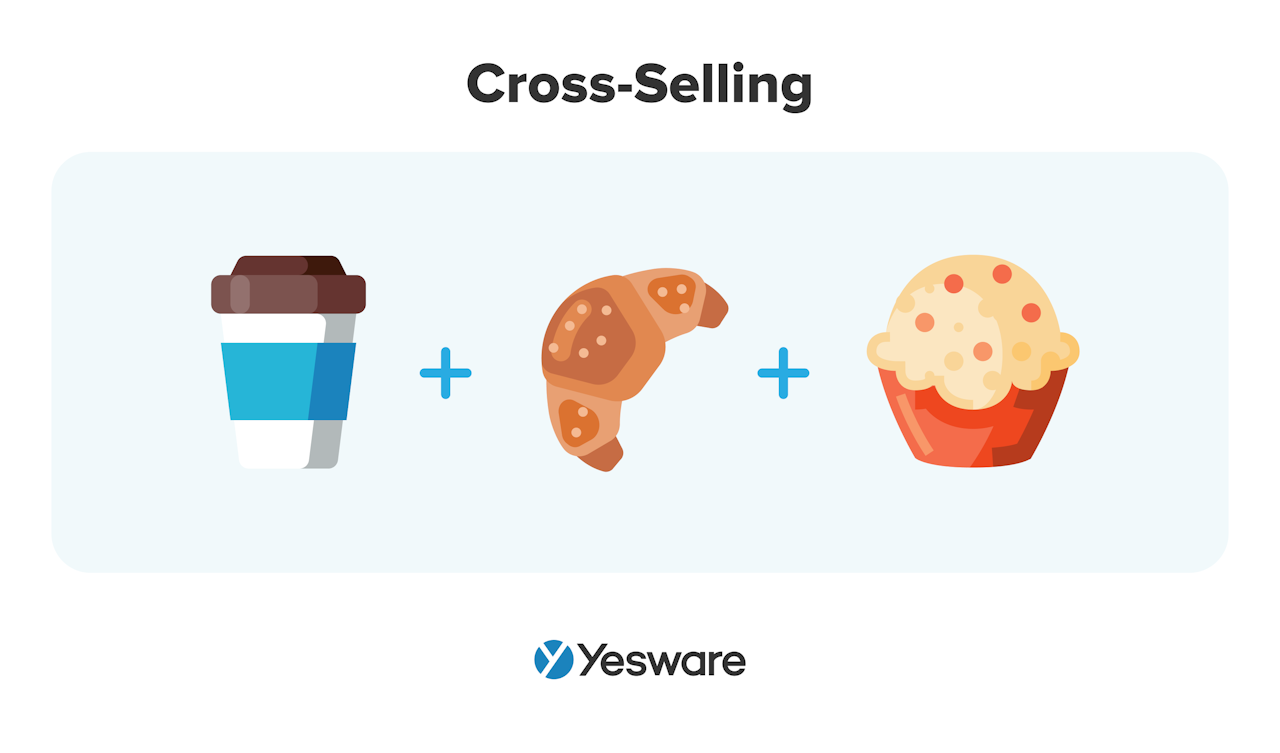 The products should complement one another, and each resolve unique pain points related to the same problem. Cross-selling can strengthen the buyer-seller relationship, increase customer LTV, and improve an organization’s KPIs.
The products should complement one another, and each resolve unique pain points related to the same problem. Cross-selling can strengthen the buyer-seller relationship, increase customer LTV, and improve an organization’s KPIs.
36. Customer Relationship Management (CRM) System
The customer relationship management (CRM) system is a database of customer information — though that definition is far too simple to describe the true capabilities of even the most basic CRM software platforms. 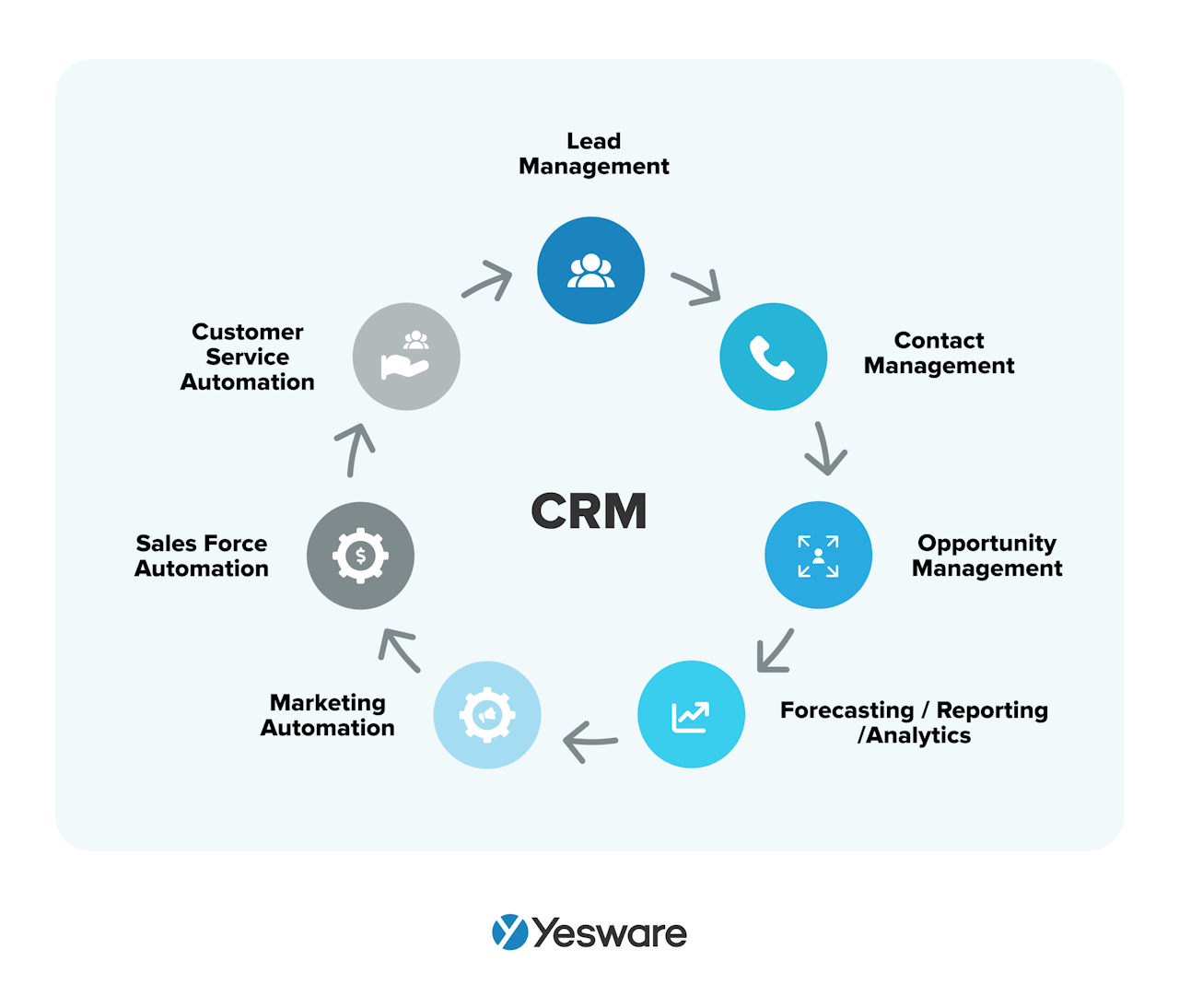 CRM systems store contact and demographic data for prospects and customers. They also store information about past interactions and previous purchases, including which tactics and content were most effective during the process.
CRM systems store contact and demographic data for prospects and customers. They also store information about past interactions and previous purchases, including which tactics and content were most effective during the process.
Most CRM systems can also send automated, personalized emails, schedule appointments, log support cases, and much more. Analytical CRM systems can analyze the tremendous amount of data it stores and manages in order to give sales reps insights into what customers really want.
The goal of a CRM system is to equip salespeople with every piece of data they might ever conceivably need in order to move an opportunity further down the pipeline.
Every customer-adjacent team should have full access to the CRM; choosing a platform that integrates with your existing sales tech stack will streamline the adoption process.
37. Customer Acquisition Cost (CAC)
Customer acquisition cost (CAC) refers to the costs associated with signing a new customer. Keeping close tabs on CAC can help companies monitor their profitability.
To calculate CAC, first determine how much you spent over a given time period. You should include advertising spend, sales team salaries and commission, bonuses, and any overhead in this figure.
Then, divide that cost by the number of customers you acquired in that same period. The result is your customer acquisition cost.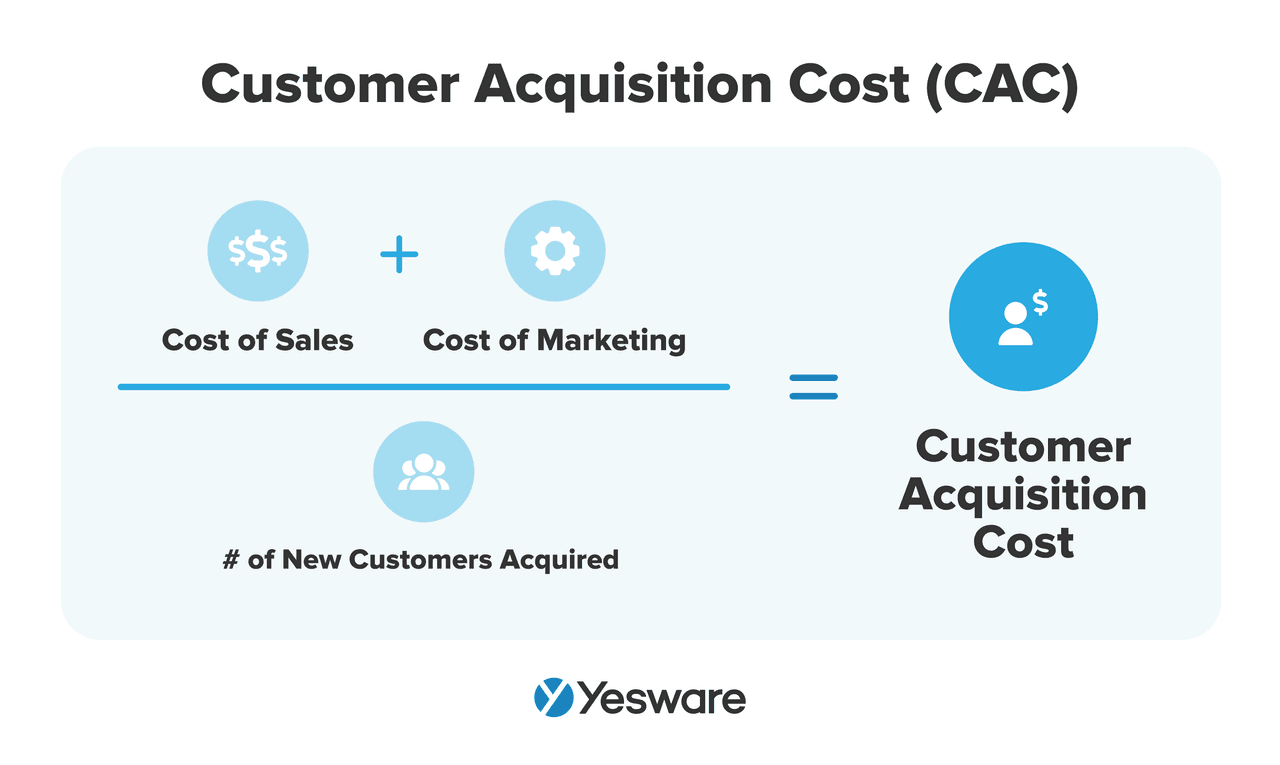
38. Customer Lifetime Value (LTV)
Customer lifetime value (LTV) is a prediction of the profit that will result from the future relationship with a customer.
To calculate customer LTV, multiply the average purchase value by the average purchase frequency by the average customer lifespan.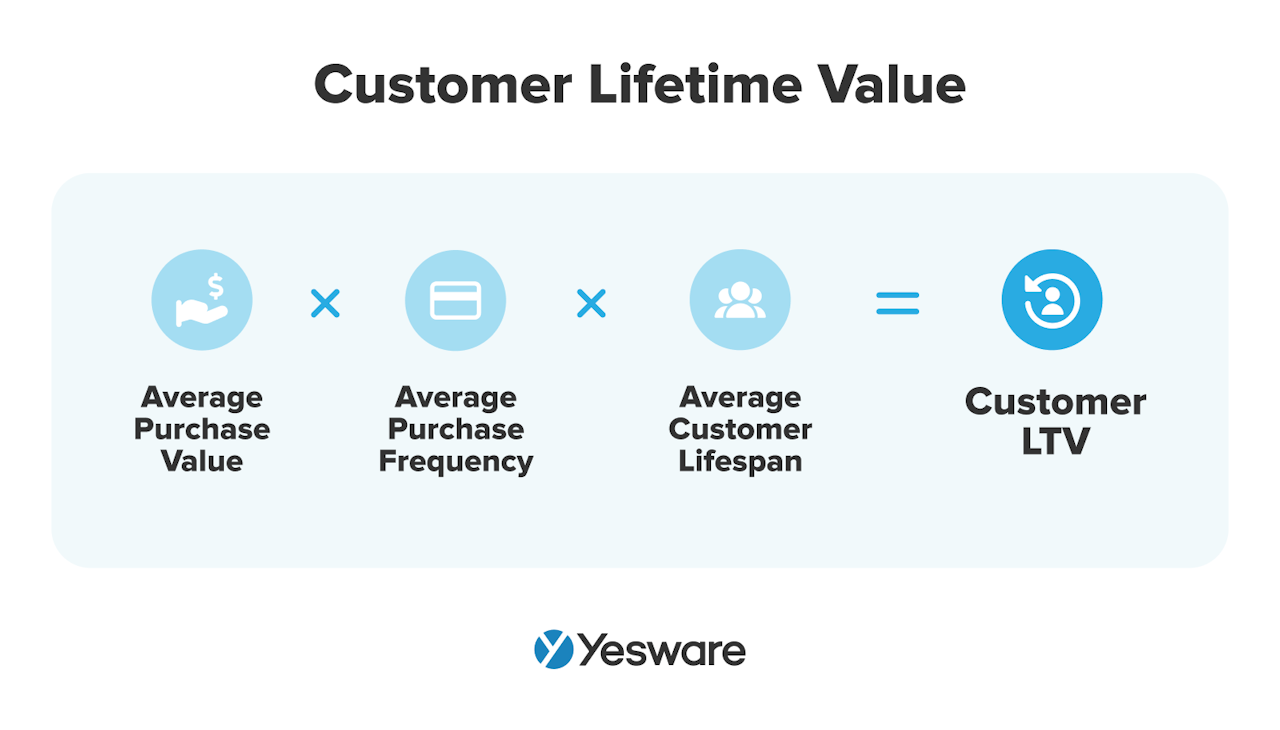 Customer lifetime value is highly specific to individual markets and companies, and can vary widely based on churn rates, average profit margin, length of the customer lifecycle, and more.
Customer lifetime value is highly specific to individual markets and companies, and can vary widely based on churn rates, average profit margin, length of the customer lifecycle, and more.
39. Customer Success
Customer success refers to either the team or the business practice that prioritizes the satisfaction of paying customers.
Attention to customer success ensures a mutually beneficial relationship for both buyer and seller; the customer gets their pain points resolved more completely, and the business earns the customer’s loyalty.
40. Decision Maker
The decision maker in the sales process is the person who signs off on the purchase. Sellers need to appeal to decision-makers throughout the sales process if they want to close the deal. Decision-makers are often guarded by gatekeepers.
41. Demand Generation
Demand generation refers to the process of building brand and product awareness.
Demand generation strategies and channels include email drip campaigns, content marketing, SEO best practices, and other lead nurturing programs.
42. Discovery Call
The discovery call is one of the first steps of the sales process. It’s the first call that a sales rep makes to a lead; its purpose is to build rapport and qualify the lead. Discovery calls can be cold or scheduled. 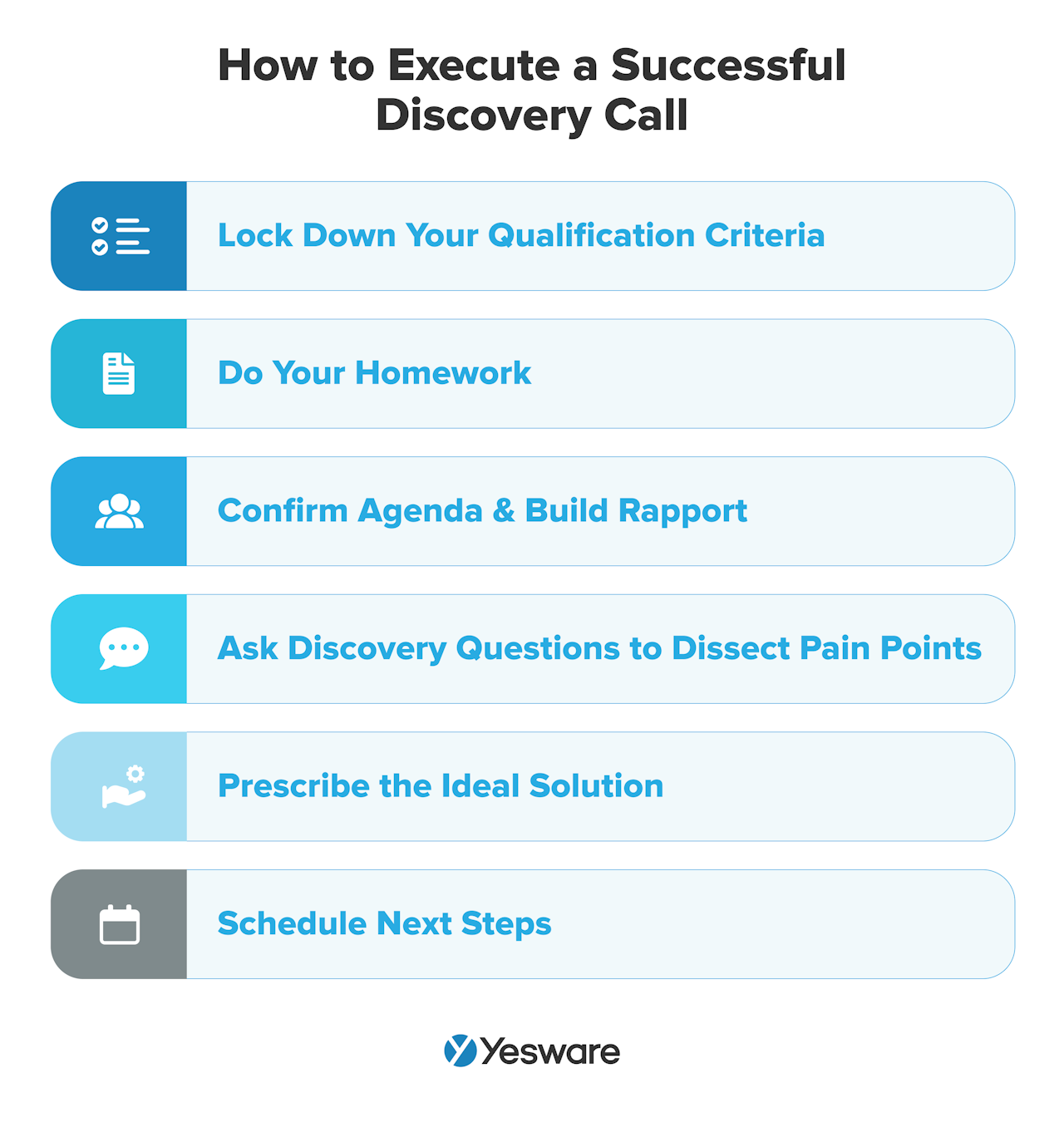
43. Feature
A feature is a function of a product. Some features are common to a product and all of its competitors, but features can also include unique selling points (USPs). Features solve buyer’s needs.
44. Field Sales Rep
A field sales rep is a salesperson who performs their sales duties outside of business headquarters or an office. They travel to prospects to present demos and negotiate in person.
45. Flywheel
The flywheel is the updated version of the sales funnel. It places the customer at the center of the sales process, rather than at the end.
The flywheel design was chosen to represent the fact that the various stages of awareness, engagement, and delight can actually occur at any point during the buyer’s journey, and at multiple times throughout.
46. Forecasting
Sales forecasting is the process of predicting future sales for the purpose of creating more accurate business/sales goals and improving overall decision-making.
Sales forecasting requires sales managers to look at historical sales data, industry trends, supply chain status, and individual sales rep performance to make their estimates.
Sales Terms G-L
47. Gatekeeper
A gatekeeper is a person who either enables or prevents access to a decision-maker. The gatekeeper may be someone relatively benign, like a receptionist, or more obstructive, like a penny-pinching accountant. They stand between a sales rep and the buyer.
48. Go-To-Market (GTM) Strategy
A go-to-market strategy is a sales team’s plan for launching a new product, or launching an existing product in a new market or territory. It outlines the strategies and tactics the team will use for marketing, distribution, pricing, social media, and anything else involved in the sales process. 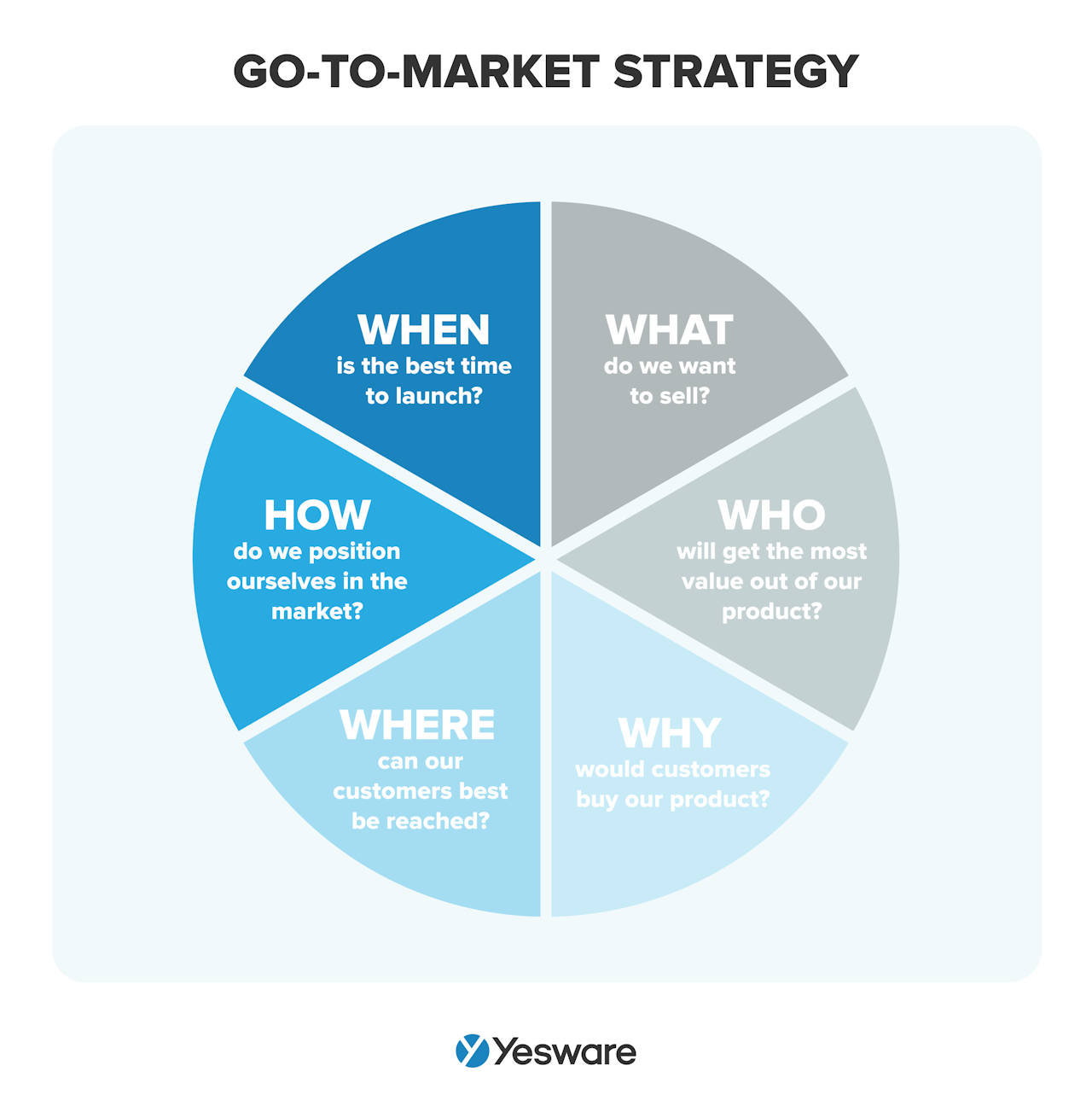
49. Ideal Customer Profile (ICP)
The ideal customer profile (ICP) is a high-level overview of the demographic, firmographic, and technographic data of an idealized best-fit customer. The ICP should include age, gender, geographic location, budget, lifestyle, and any other relevant factors.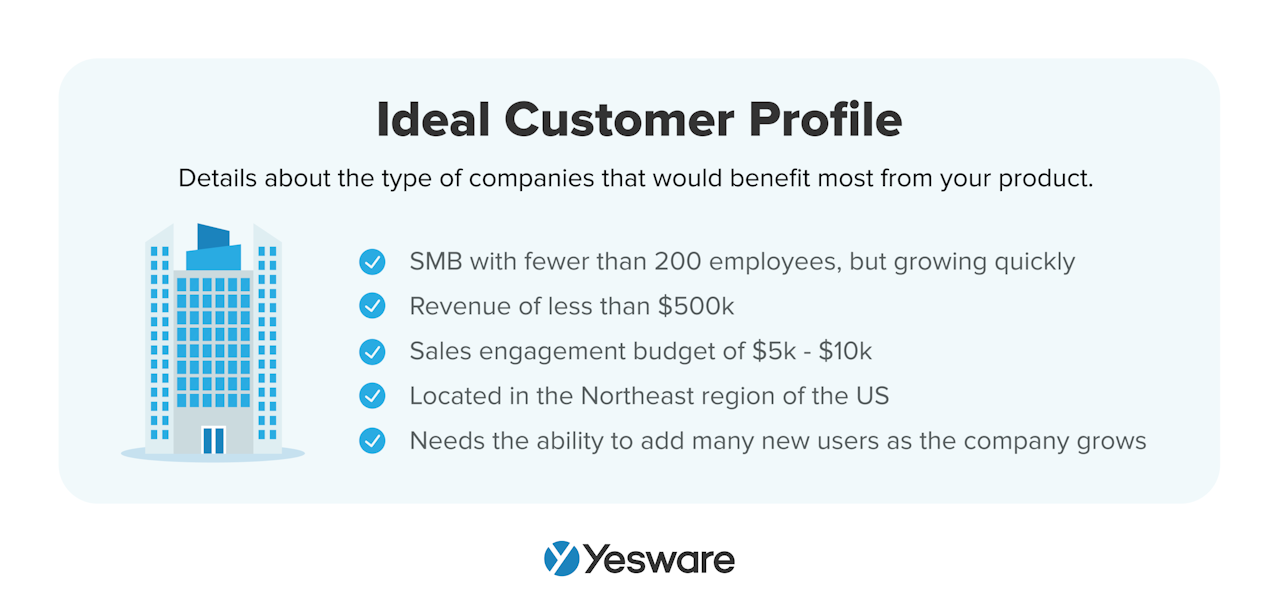 The ICP helps sales reps prioritize leads.
The ICP helps sales reps prioritize leads.
50. Inbound Sales
Inbound sales refer to the sales framework in which leads initiate contact with the seller, rather than the other way around. Prospective buyers reach out directly to sales reps by either phone, email, or social media. 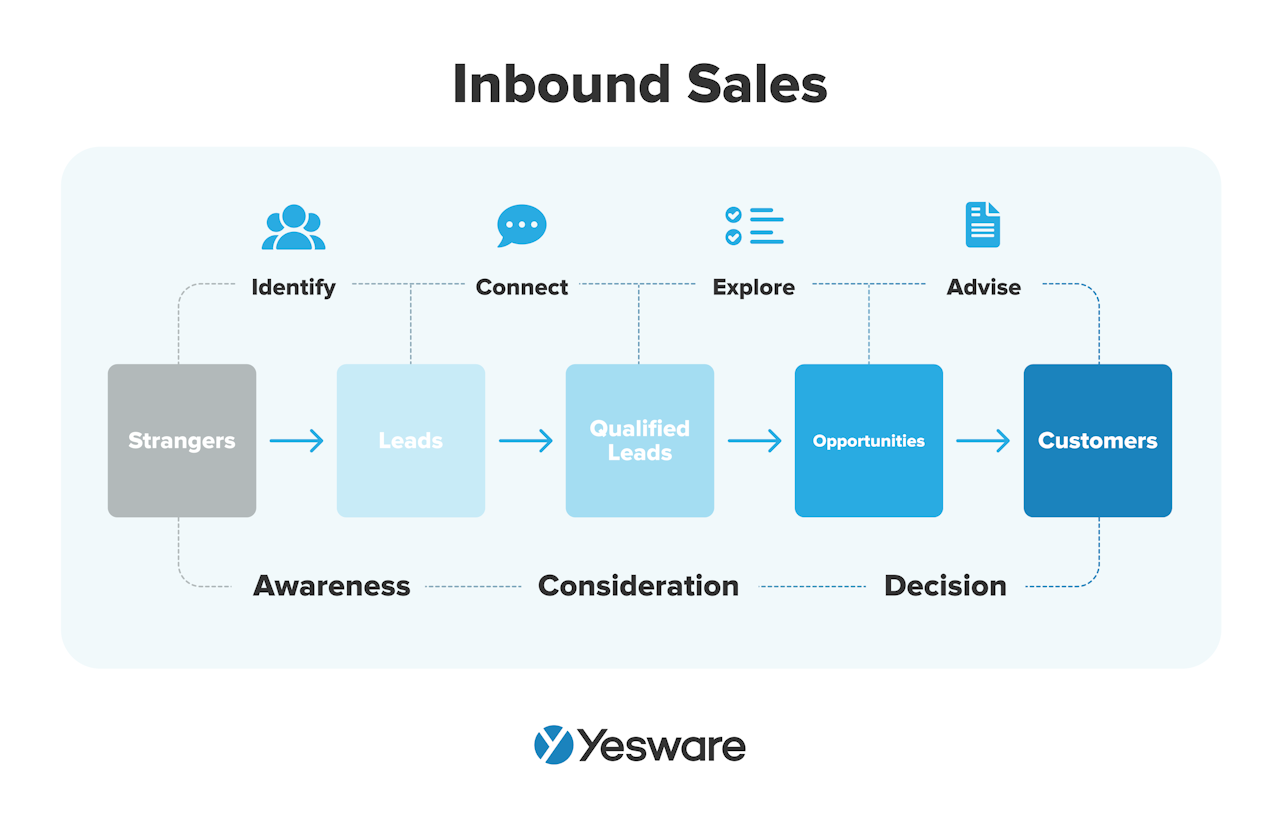 Inbound sales requires sales and marketing to work closely together. Both teams need to collaborate in order to design strategic content that will attract leads to your brand.
Inbound sales requires sales and marketing to work closely together. Both teams need to collaborate in order to design strategic content that will attract leads to your brand.
Inbound sales has quickly gained traction in an increasingly digital sales world, and it’s an important part of most sales teams’ strategies.
51. Inside Sales Rep
An inside sales rep is one who works in an office and performs most of their sales duties over the phone or via email.
52. Key Performance Indicators (KPIs)
A key performance indicator is a metric that allows sales managers to measure how effectively an organization or an individual is making progress toward their goals.
Common sales KPIs include both big-picture metrics, like annual growth, and day-to-day activities, like the number of calls made. 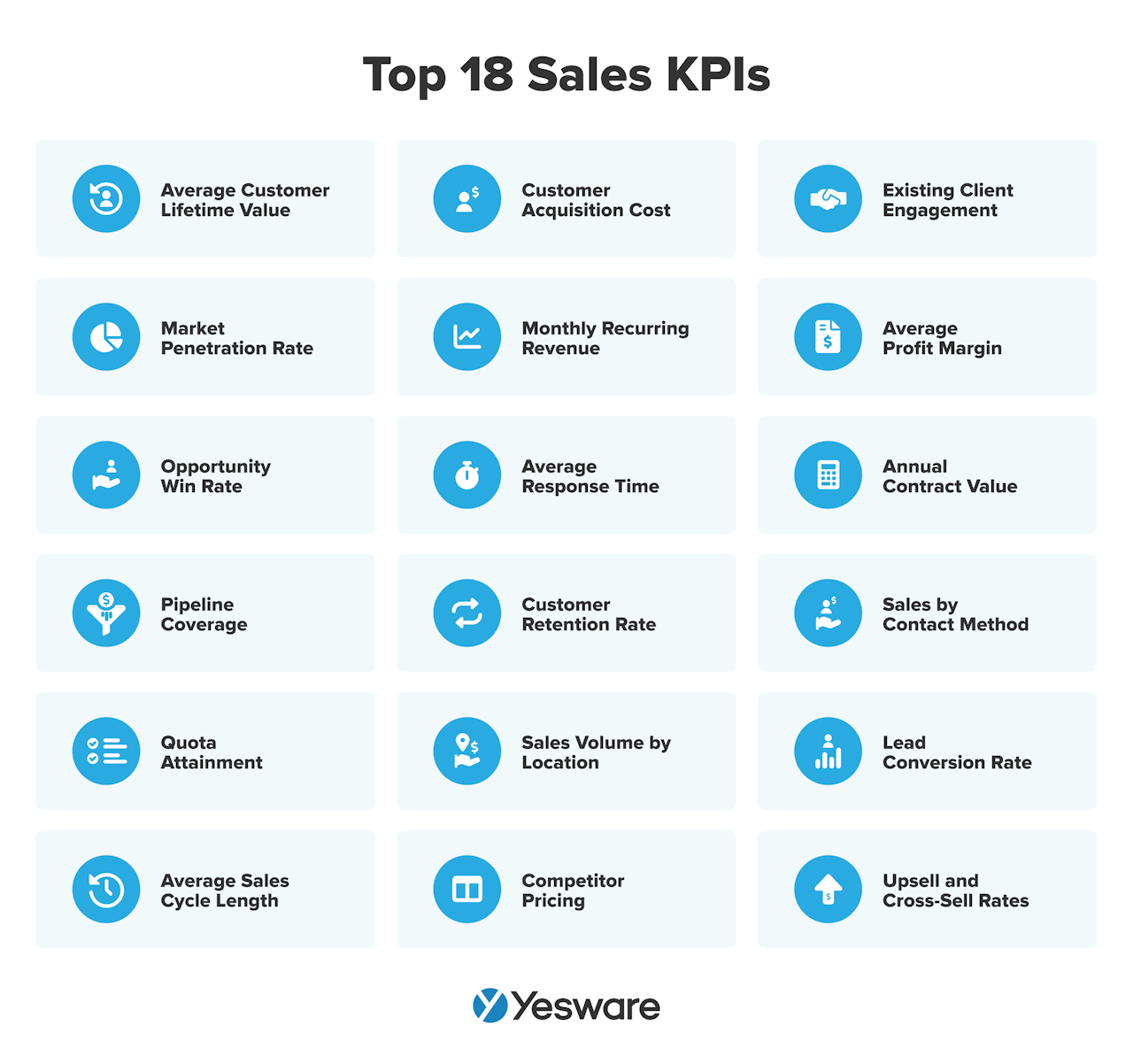
53. Lead
A lead is a person or organization that is interested in your organization or solution. Some leads go on to become prospects (some of whom go on to become customers).
Sales teams generate leads through marketing campaigns, trade shows, cold outreach, and networking. Inbound leads initiate contact themselves.
Tip: Lead vs. Prospect vs. Opportunity
54. Lead Generation
Lead generation is the process of attracting potential customers to your brand.
Sales and marketing should work closely together to develop a comprehensive lead generation strategy that includes a strategic combination of any of the following: SEO, social media optimization, email marketing, blogging, newsletters, podcast appearances, free downloads, PPC, cold outreach, or affiliate marketing.
55. Lead Management
Lead management refers to the process of attracting, qualifying, monitoring, and prioritizing potential buyers.
Well-qualified, good-fit leads are ranked, prioritized, and approached accordingly. This process is called lead management.
56. Lead Nurturing
Lead nurturing refers to the process of establishing and maintaining positive, valuable, long-term relationships between prospects/customers and sellers. Sales and marketing teams should work together to design a lead nurturing program that speaks to the specific needs of your ICP/buyer persona.
57. Lead Qualification
Lead qualification is the process of identifying whether or not a lead is a good fit for your solution. Sales reps should qualify leads according to a standard set of criteria.
The BANT framework, for example, guides sales reps in their lead qualification efforts as they work to determine leads who have the appropriate budget, authority, needs, and timeline to move forward with a purchase.
58. Lead Scoring
Lead scoring is the process of assigning specific values to certain predetermined lead criteria.
The purpose of lead scoring is to help sales reps identify which leads to pursue as the highest priorities. Lead scoring is essentially a ranking system. All top-ranking leads need to be in a good financial position to invest in your solution, among other criteria.
Sales Terms M-R
59. Mark-up
A product’s mark-up is the amount added to the cost of the item to account for overhead and profit.
60. Marketing Qualified Lead (MQL)
A marketing qualified lead is a lead who has shown interest in your brand and could potentially be a good fit for your solution.
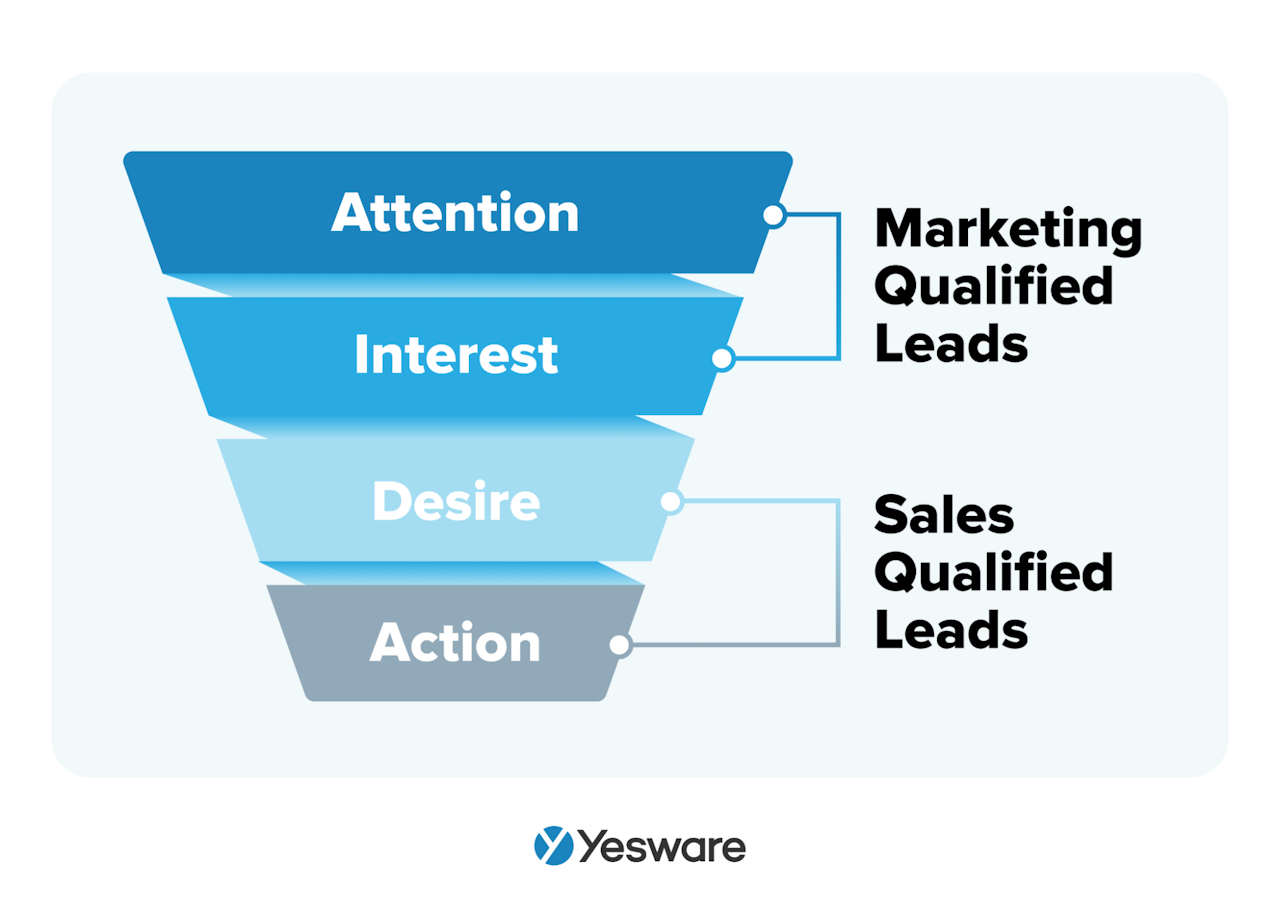
61. Middle of the Funnel (MOFU)
The middle of the funnel (MOFU) is where the lead researches and evaluates the solutions available to them. They compare features and weigh customer testimonials and case studies.
This stage immediately precedes the buyer’s decision, so it’s important that sales reps offer value to the prospect and really sell the benefits of the solution.
62. Monthly Recurring Revenue (MRR)
Monthly recurring revenue is the amount of revenue a business receives on a monthly basis from regularly-recurring account subscriptions. MRR is an important metric for SaaS companies and is better for short-term planning than long-term. MRR calculations include new accounts, upsells, loss from downsells, and loss from cancellations.
MRR calculations include new accounts, upsells, loss from downsells, and loss from cancellations.
63. Net Promoter Score (NPS)
The net promoter score is a reflection of how likely a customer is to recommend your product to someone else.
Most net promoter scores are determined via survey, where customers are asked to rank how likely they would be to repurchase and/or recommend to a friend.
- Customers who score 1 – 5 are unlikely to buy the product again, and wouldn’t recommend it to a friend. These are considered detractors.
- Customers who score 6 – 8 are satisfied enough, but wouldn’t necessarily recommend it. These people are called passive.
- Customers who score 9 – 10 are highly satisfied. They are repeat customers or have generated successful referrals. These customers are called promoters.
To calculate your NPS, subtract your detractors from your promoters.
64. Objection
An objection is a question, concern, hesitation, or challenge that a prospect brings up during the sales process.
Sales objections are challenging, but are a normal part of the sales process. Every company has different criteria about what constitutes a sales objection and how to handle them. Fortunately, effective sales and marketing teams can learn to anticipate common sales objections and create sales scripts to help overcome them.
65. Onboarding
Onboarding has two definitions in the sales world.
The first definition refers to the process of teaching recent buyers how to manage their new customer accounts and navigate the product and customer support process.
Onboarding can also refer to the process of integrating a new sales rep into the sales team. An onboarding program might include sales training, information on company culture, a mentorship program, or sales coaching.
66. Opportunity
A sales opportunity refers to a prospect that is well-qualified and interested in your brand.
Every company has its own definition of what constitutes an opportunity, so specific criteria will vary. Most companies use the sales term “opportunity” interchangeably with sales qualified leads (SQL).
67. Optimization
Optimization is the process of using data to improve a system, process, or procedure over several iterations until it performs at maximum output or benefit.
68. Outbound Sales
Outbound sales is a sales process in which the seller initiates contact with the buyer. Cold calling and cold emailing are both examples of outbound sales strategies. Outbound sales might also involve social media outreach.
Although outbound sales has a reputation for being intrusive, skilled salespeople know that it’s an important part of a comprehensive sales strategy.
69. Pain Point
A pain point is a description of a customer’s need framed around the way it impacts them. Pain points are arguably the most important data a sales rep can uncover during the sales process; they will likely be unable to close the deal without addressing how the solution will specifically resolve the buyer’s pain points.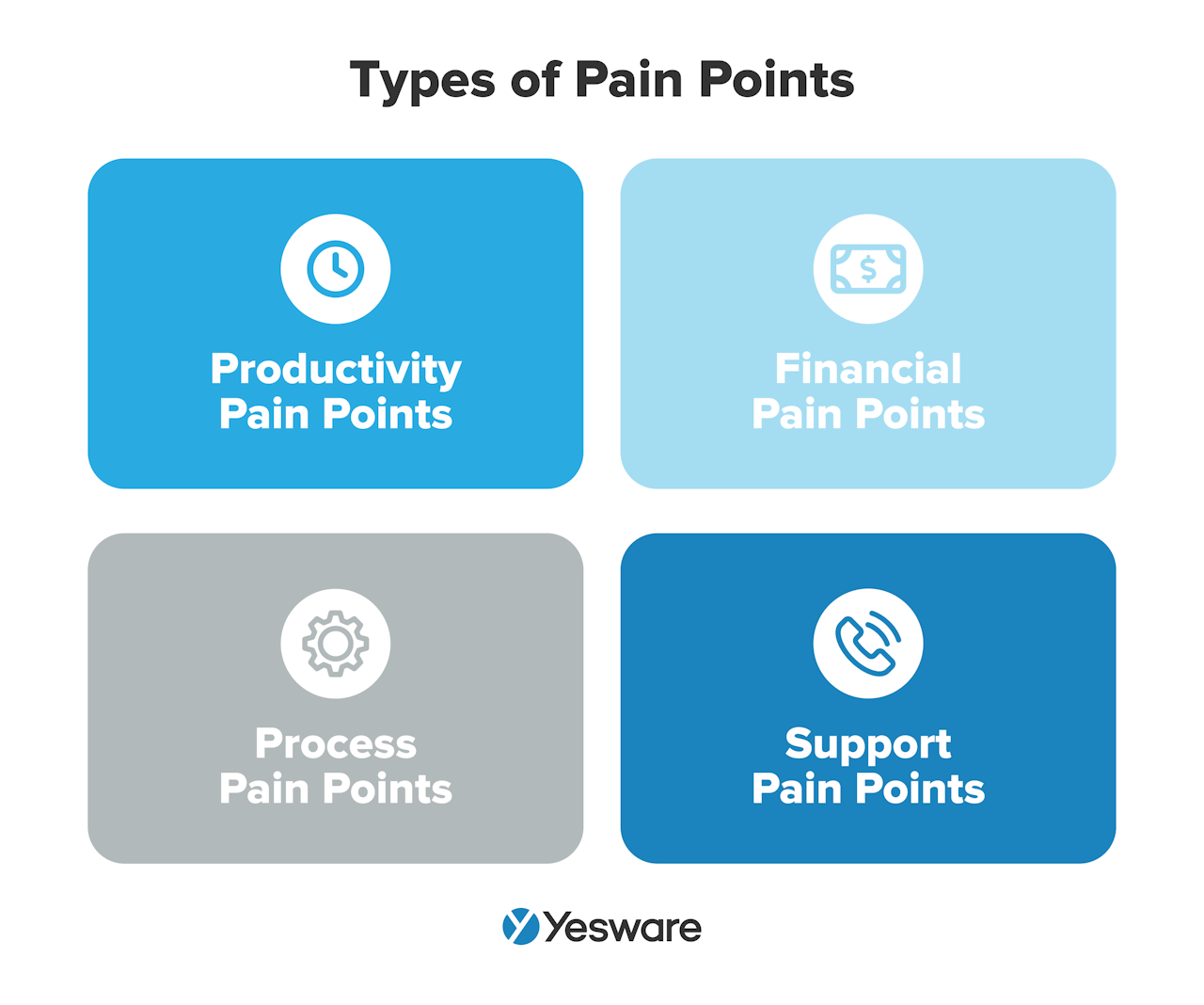
70. Pipeline Management
Pipeline management is the process of tracking, prioritizing, and analyzing prospects’ journeys through the sales pipeline.
The goals of pipeline management are twofold: to gather and use real-time data from the pipeline that helps convert specific, individual customers, and to gain long-term insights that help attract best-fit leads and design highly effective pipeline strategies.
Sales managers are usually responsible for pipeline management.
71. Positioning Statement
A company’s positioning statement helps sales reps start sales conversations with prospects that are strategically framed around their unique needs and pain points.
Positioning statements can be comments, questions, or a combination of both that tell the buyer who the sales rep is, more about their brand, and details about their solutions.
Here’s an example of a positioning statement: Hi, I’m Dan. I help sales managers who are overwhelmed by the amount of data that needs to be analyzed to measure sales progress.
72. Profit Margin
Profit margin is whatever is leftover in earnings after all costs are accounted for.
To calculate profit margin, divide gross profit (revenue minus cost of goods sold) by revenue. Then, multiply that number by 100 — that’s your profit margin. 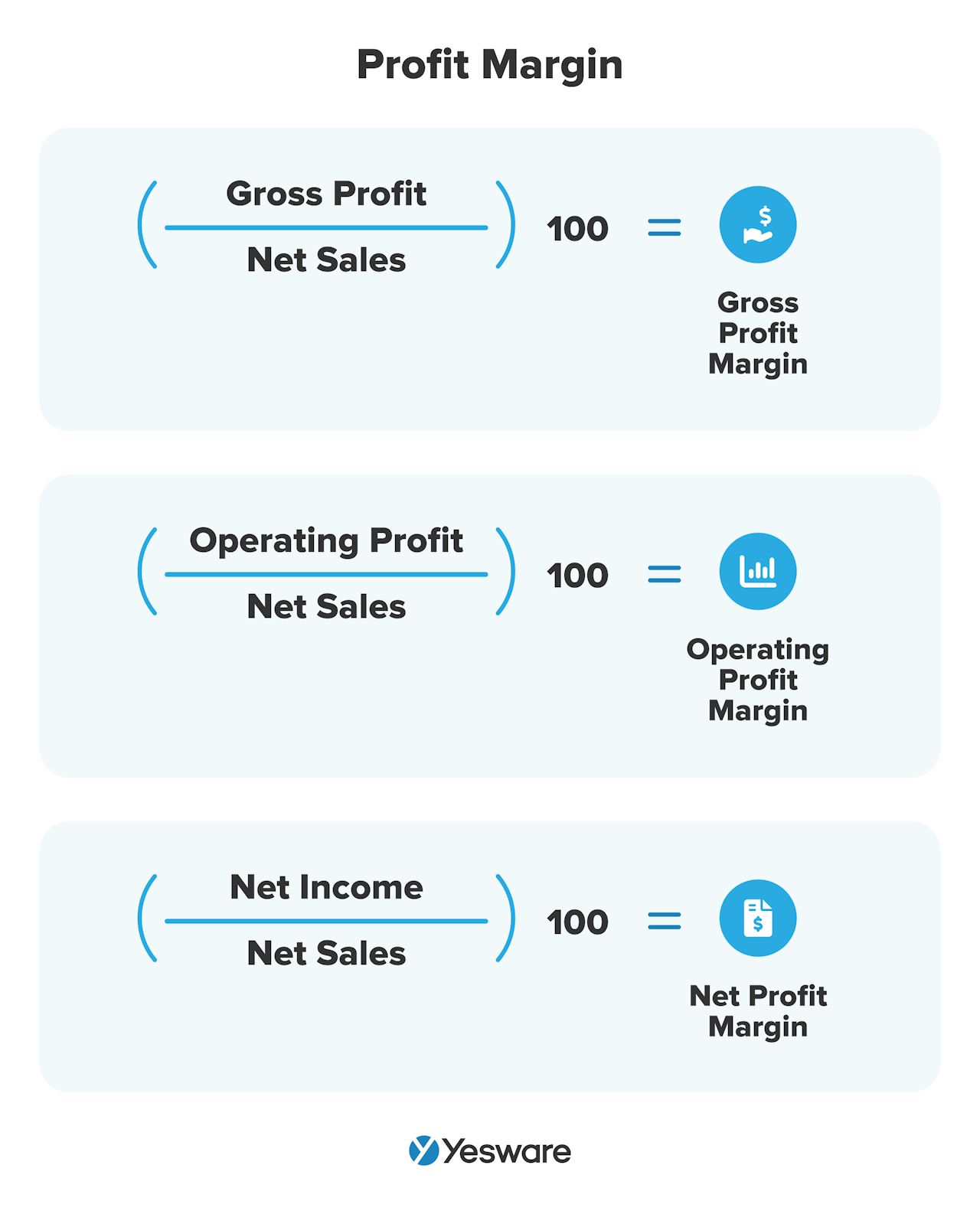
73. Prospect
A prospect is a potential buyer that has shown interest in and/or interacted with someone at your company.
Many people mistakenly interchange the sales terms “prospect” and “lead,” but prospects are actually screened for basic qualifying criteria. A lead, on the other hand, is simply someone who might be a good fit for your product who you can contact. Prospects are a known close match to the ICP and may have otherwise shown potential to be a viable sales opportunity.
74. Prospecting
Prospecting is the process of seeking out, contacting, and qualifying new leads. It’s a continuous process, and should be systemized, tracked, and managed.
As the first step in the sales process, it’s important that prospecting is optimized to attract a steady flow of good-fit leads to the pipeline.
75. Qualified Lead
Qualified leads meet certain criteria that make them more likely to become customers.
There are two types of qualified leads: marketing qualified leads (MQLs) and sales qualified leads (SQLs). MQLs are potential buyers that have shown interest in a brand. SQLs are more seriously qualified; they have been vetted by the sales team as being likely to close. 
76. Quota
A quota is basically a sales goal. It’s a set amount of sales revenue that a sales rep is expected to earn over a certain period of time.
Quota is a benchmark used to measure a sales rep’s or team’s performance and can be one metric used to determine commission, bonuses, and advancements.
77. Return on Investment (ROI)
Return on investment (ROI) is a percentage that shows how much measurable value a company got from a particular investment.
To calculate ROI, divide the benefit (return) by the cost of the investment. 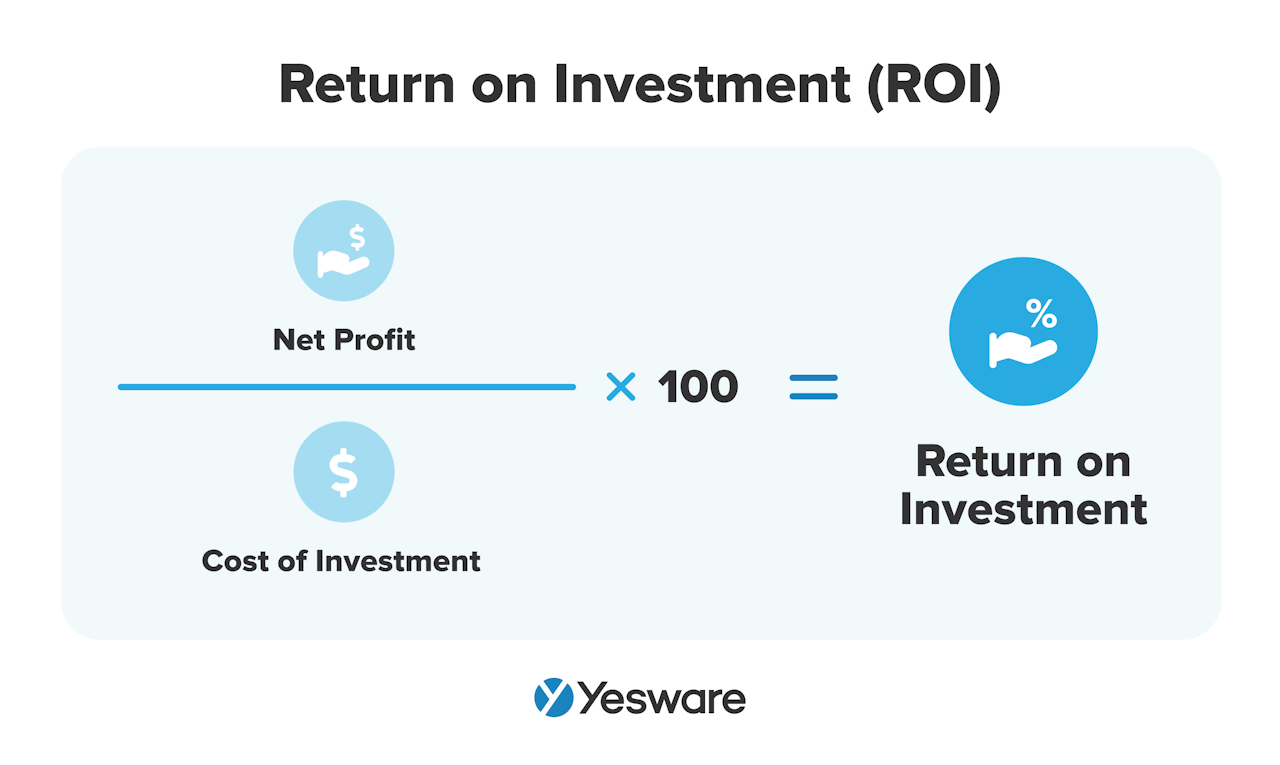
78. Revenue
Revenue is how much money a business earns over a certain period of time. Most companies measure revenue at least quarterly and annually.
Another way to think about revenue is total earnings from sales.
Sales Terms S-Z
79. Software as a Service (SaaS)
Software as a service — often referred to simply by its well-known acronym SaaS — is a sales model in which customers subscribe to access to a software. SaaS products are usually accessed via the internet.
80. Sales Coach
A sales coach works with sales reps to improve sales skills, self-esteem, and goal-oriented task management.
Some sales managers adopt the additional role of sales coach, but some organizations choose to implement non-managers in the role. Some even higher outside consultants for sales coaching.
Sales coaching is known to have dramatic impacts on sales team performance.
81. Sales Development Representative (SDR)
A sales development representative (SDR) is an inside sales rep that works primarily with inbound leads (though they do sometimes handle outbound leads, as well).
Sales development reps are responsible for lead generation, prospecting, and building rapport before passing qualified leads to account executives.
82. Sales Dashboard
A sales dashboard is a tool that aggregates sales data and formats it into an aesthetically pleasing, easy-to-understand graphical form.
Sales dashboards display a sales team’s most important sales metrics in a way that’s straightforward and actionable.
The best sales dashboards need to be able to update and sync in real-time so that everyone stays up-to-date on the many moving parts of the sales pipeline.
A sales dashboard is a powerful resource for helping organizations reach their sales goals.
83. Sales Enablement
Sales enablement is the practice and process of equipping the sales team with the skills, content, training, and/or guidance they need to effectively navigate the sales process.
84. Sales Funnel
The sales funnel is one way to model the customer journey. It’s almost always broken down into six stages: awareness, interest, consideration, intent, evaluation, and purchase. 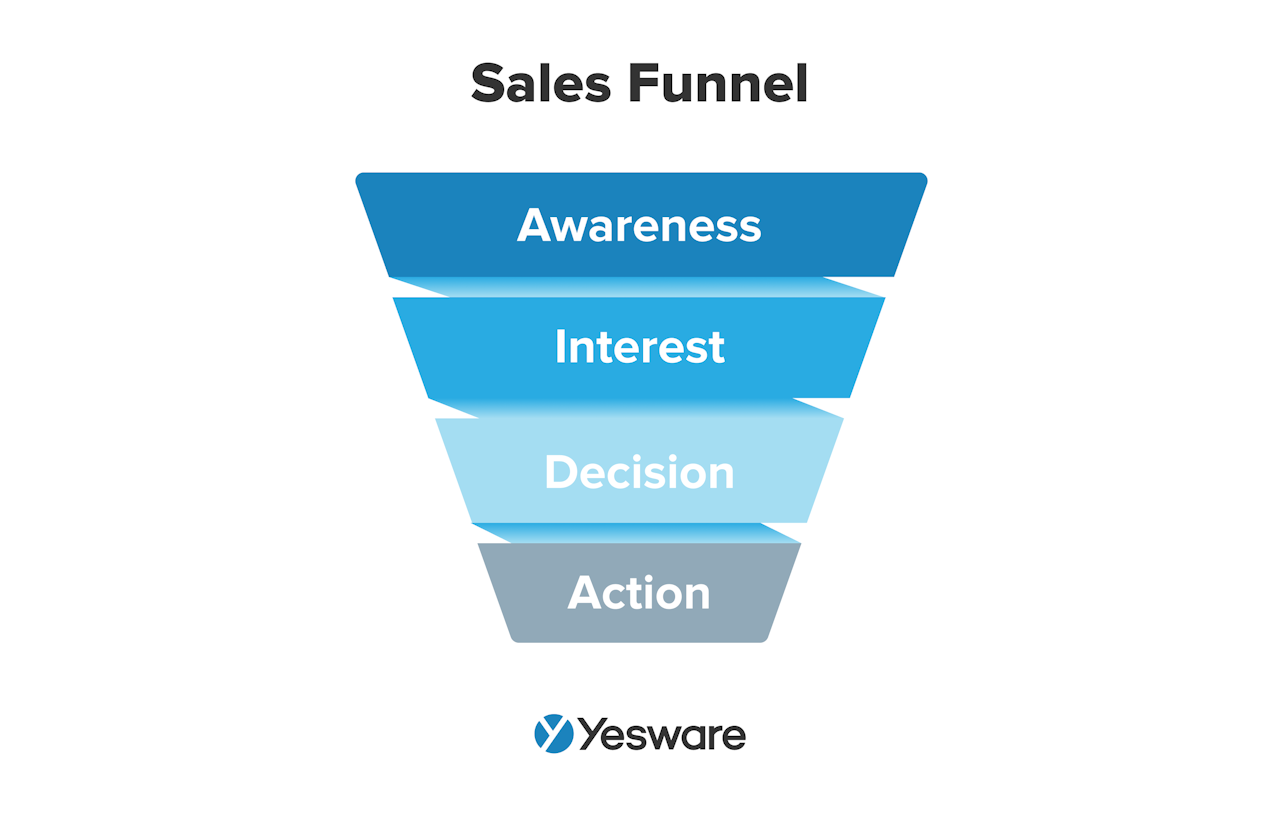 The sales funnel runs adjacent to the sales pipeline.
The sales funnel runs adjacent to the sales pipeline.
85. Sales Methodology
A sales methodology is a set of rules, principles, and philosophies that sales reps can follow to guide their approach and decision-making process throughout the sales cycle.
The right sales methodology can help sellers translate goals into actionable steps and sales tactics.
Popular sales methodologies include SNAP selling, Challenger Sales, and Sandler Sales.
86. Sales Performance Management
Sales performance management is the process of strategically using your sales personnel, sales resources, and sales processes for maximum efficiency.
Sales performance management takes into account many components of sales performance, including sales rep compensation, lead delegation, quota setting, gamification, and more.
87. Sales Process
The sales process is the set of strategic steps a salesperson takes in order to make a sale. The sales process should be systematic and repeatable, with proven strategies to convert prospects through each stage.
88. Sales Pipeline
The sales pipeline is the visual representation of the stages a sales rep completes in order to convert a prospect into a customer.
The sales pipeline runs adjacent to the sales funnel. Its stages are divided according to a prospect’s readiness to buy.
89. Sales Operations
Sales operations (also sometimes called sales ops) help sales teams close more deals, faster.
This sales term refers to the process of alleviating sales reps of as many non-selling activities as possible so that they can focus their efforts on revenue-generating sales activities.
90. Sales Qualified Lead (SQL)
A sales qualified lead (SQL) is a prospect that has been vetted by both marketing and sales and has a high likelihood of making a purchase. SQLs are stronger sales opportunities than MQLs.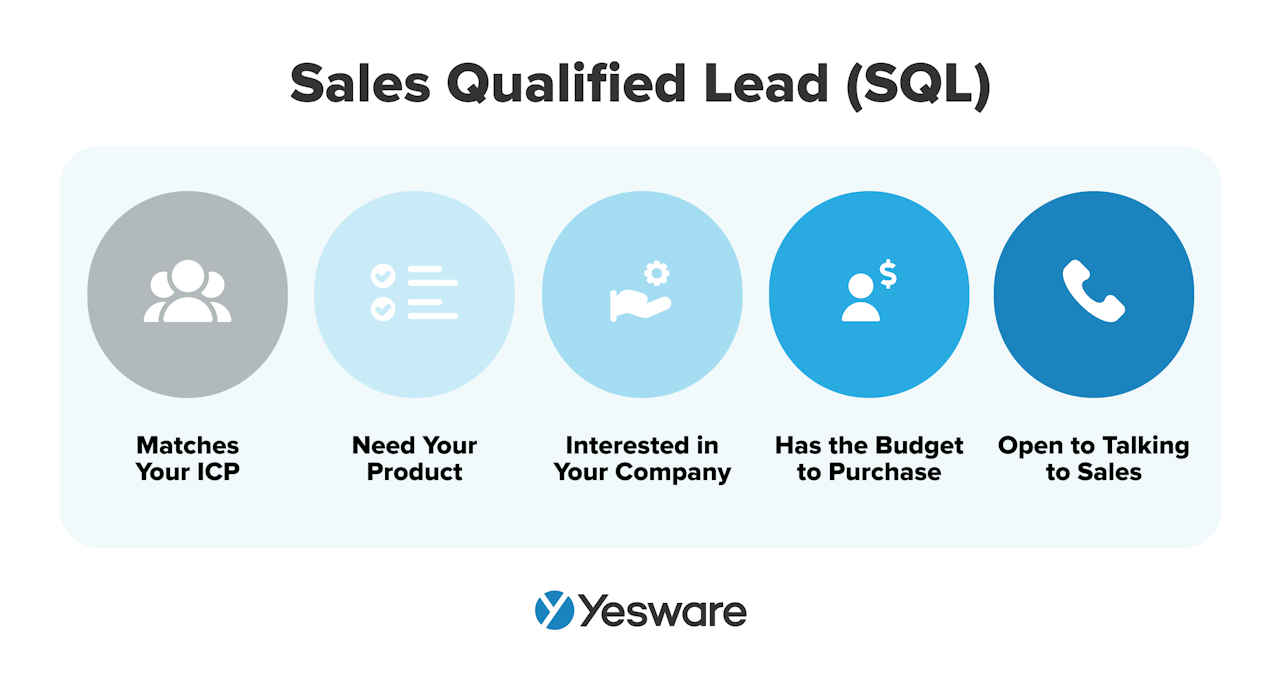
91. TAM, SAM, SOM
The silly-sounding TAM, SAM, SOM acronym stands for three key terms: Total Addressable Market, Serviceable Addressable Market, and Serviceable Obtainable Market.
Total Addressable Market represents the absolute maximum market size or potential revenue that a business can generate with their product or service.
The Serviceable Available Market is a subset of the TAM, defined by the demographics of your product niche. It shows how big of a market segment exists that can be served by your product.
The Serviceable Obtainable Market gives a realistic picture of what share of market a business can reasonably capture in the next five years.
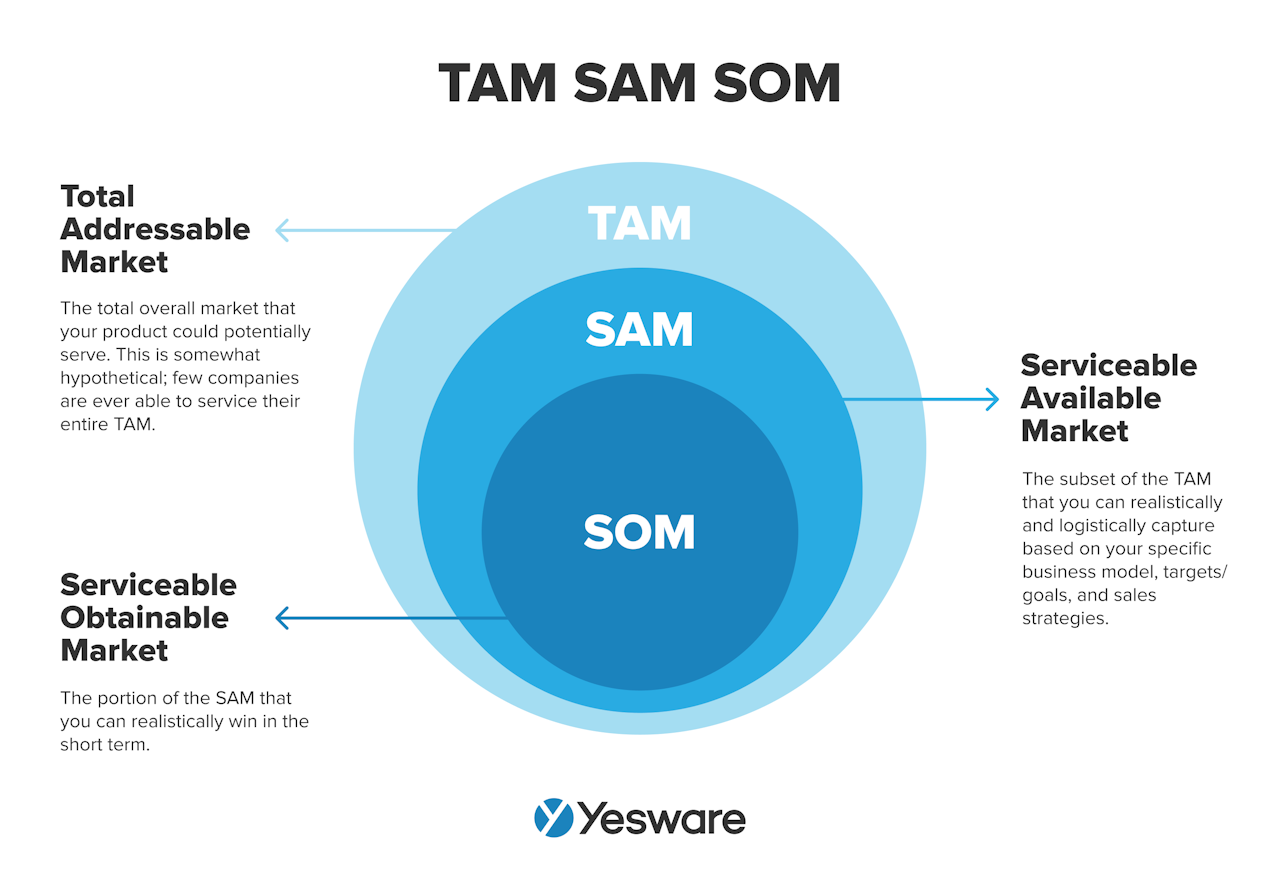
TAM, SAM, and SOM help sales organizations define the opportunities within their market.
92. Service Level Agreement (SLA)
A service level agreement (SLA) is generally known as a working agreement between sales and marketing that clearly outlines the expectations each team has for the other. Effective sales organizations work hard to align the two departments, and SLAs can help both teams stay on the same page and be accountable to one another.
Sales will expect marketing to deliver a steady flow of high-quality leads. Marketing will expect sales to pursue each lead to a certain extent for a certain period of time before abandoning them. These are the kinds of things that are outlined in a service level agreement.
Some people also use the term “service level agreement” to refer to a contract between a service provider and their customer. This kind of SLA describes the quantity, availability, restrictions, and other specifics regarding the service.
93. Smarketing
Smarketing is a clever portmanteau that describes the best practice of aligning sales and marketing teams.
When sales and marketing collaborate to improve both teams’ processes and feedback loops, workflows become smoother and more productive and branding becomes more consistent and powerful.
94. Social Selling
Social selling is an approach to the sales process that leverages the power of social media.
In this sales method, sales reps use social media to interact with prospects and customers. Via their business profiles, they can answer questions, share insights, and otherwise provide value.
Social selling uses social media platforms like Twitter, Facebook, LinkedIn, and sometimes even Instagram to communicate, nurture leads, and position themselves as thought leaders.
95. Sound Bite
A sound bite is like a mini sales script. It’s a few words or phrases that a sales rep can quickly recall that will help them effectively communicate with a prospect in the moment. Sound bites are usually used to help overcome an objection.
96. Top of the Funnel (TOFU)
The top-of-the-funnel (TOFU) is the first stage of the buyer’s journey. During this stage, the potential buyer is starting to understand they have a problem and is working to identify it. Educational content resonates strongly with buyers in this stage.
97. Upselling
Upselling is the practice of selling a higher-end version of a product to a customer. 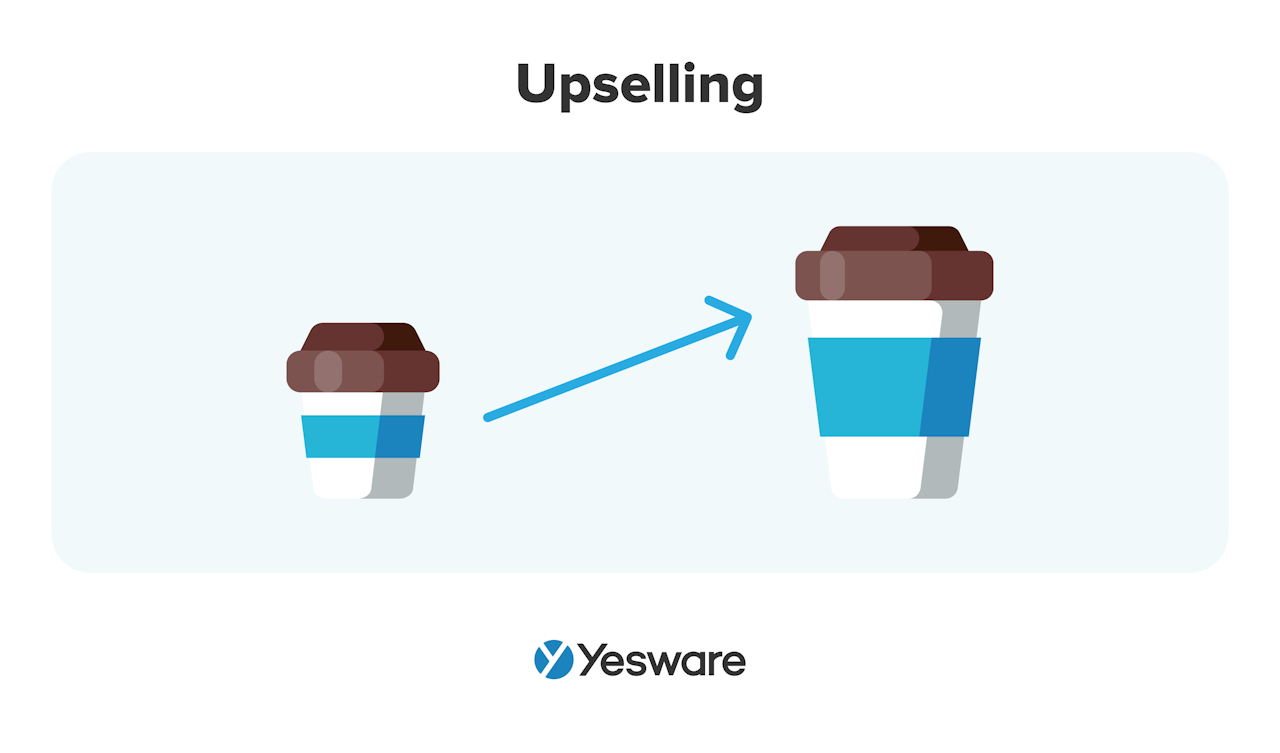 Upselling may mean adding more features to the product, or offering a larger size/more capability.
Upselling may mean adding more features to the product, or offering a larger size/more capability.
Note that upselling does not include selling additional products; it specifically refers to an upgraded version of the original product.
98. Unique Selling Point (USP)
A unique selling point/unique selling proposition (USP) is a feature that helps a product stand apart from its competitors. A USP gives a product or a brand advantage or distinction in the market.
99. Value Proposition
A value proposition is a statement that explains why customers should buy from your brand. It should position your brand as one that has a deep understanding of your market’s needs, and make you seem like a better option than your competition.
100. Weighted Sales Pipeline
A weighted sales pipeline assigns value to each active sales opportunity to help sales reps determine how to prioritize their resources.
Get sales tips and strategies delivered straight to your inbox.
Yesware will help you generate more sales right from your inbox. Try our Outlook add-on or Gmail Chrome extension for free, forever!
Related Articles
Casey O'Connor
Casey O'Connor
Casey O'Connor
Sales, deal management, and communication tips for your inbox

